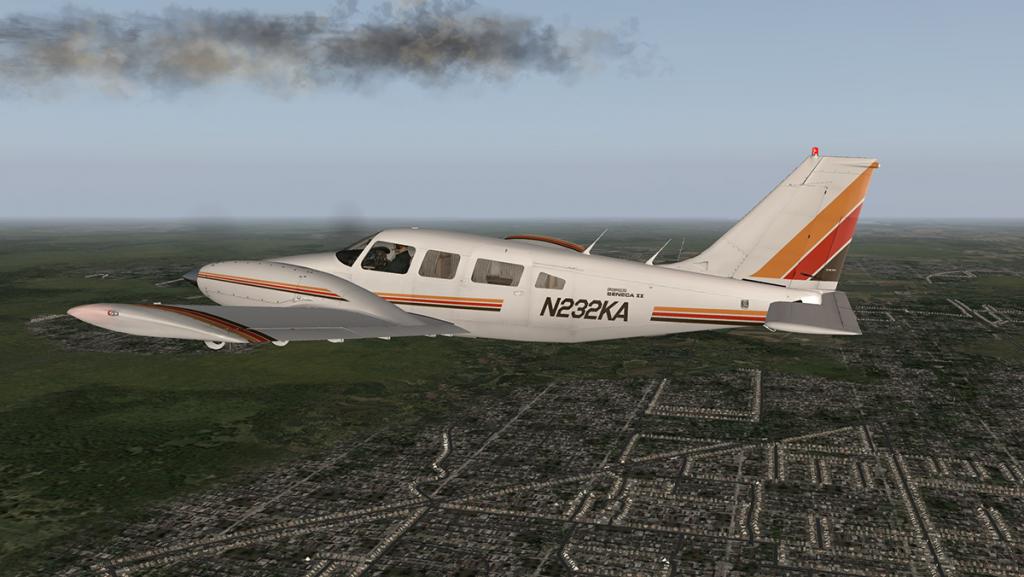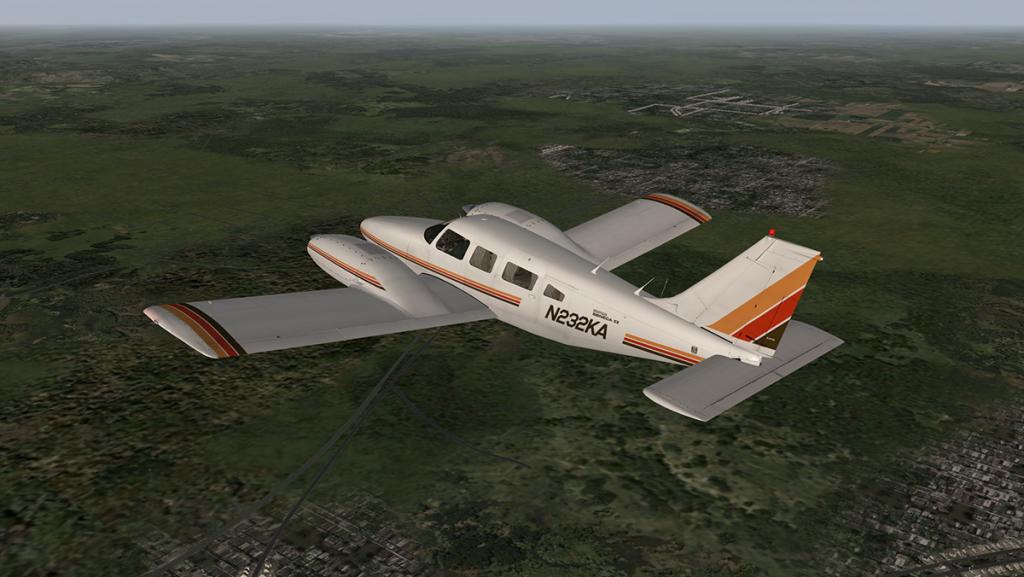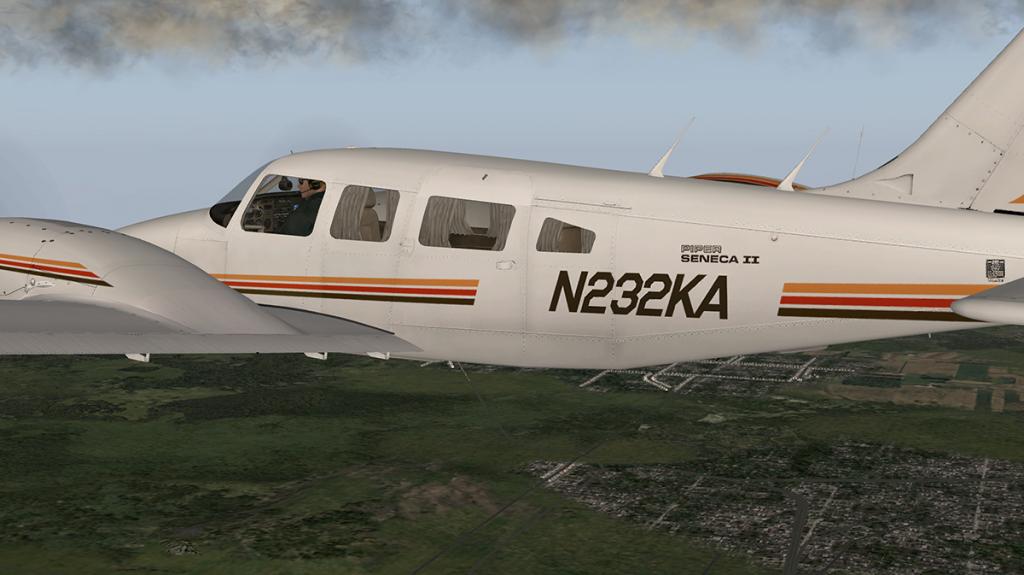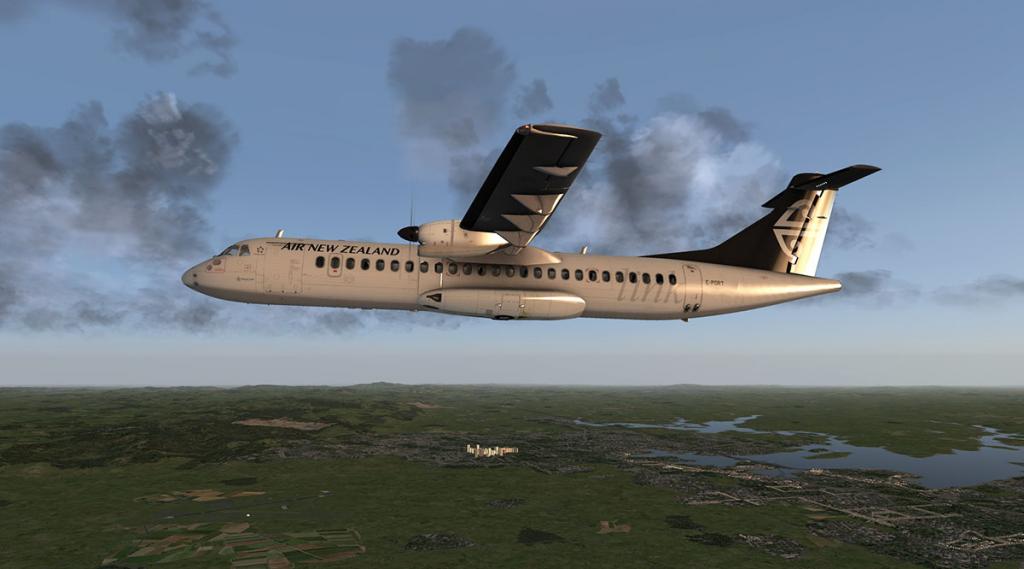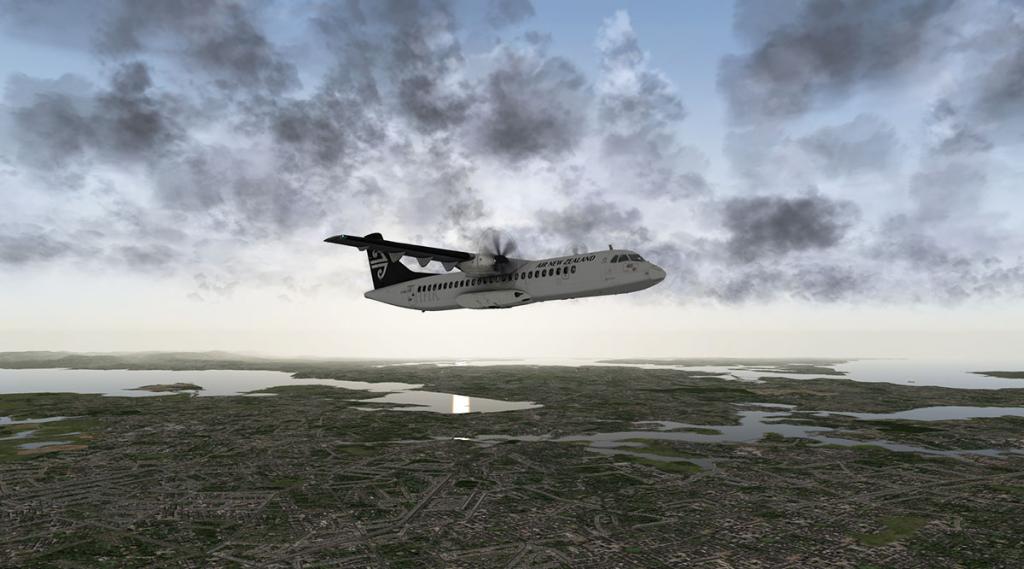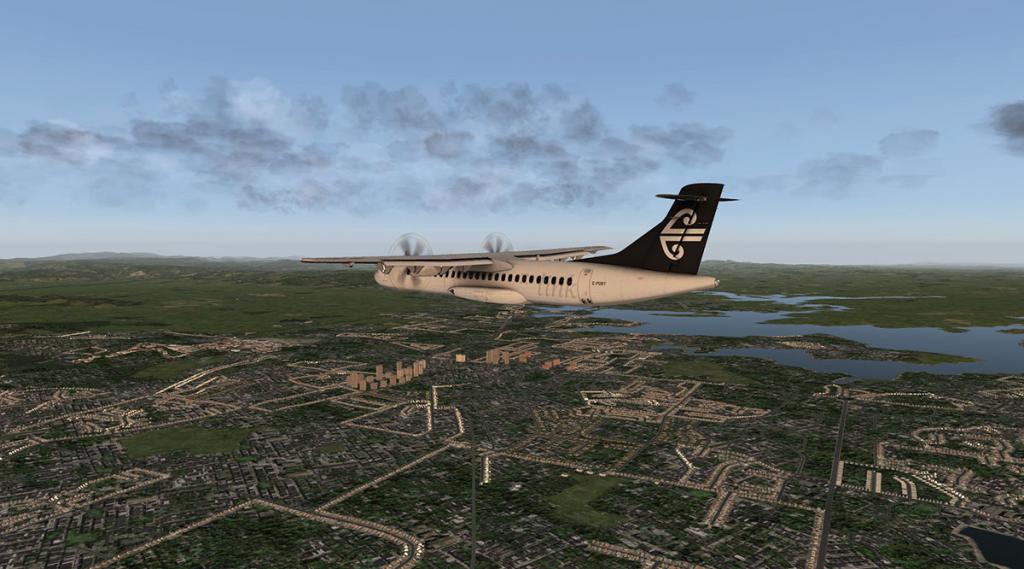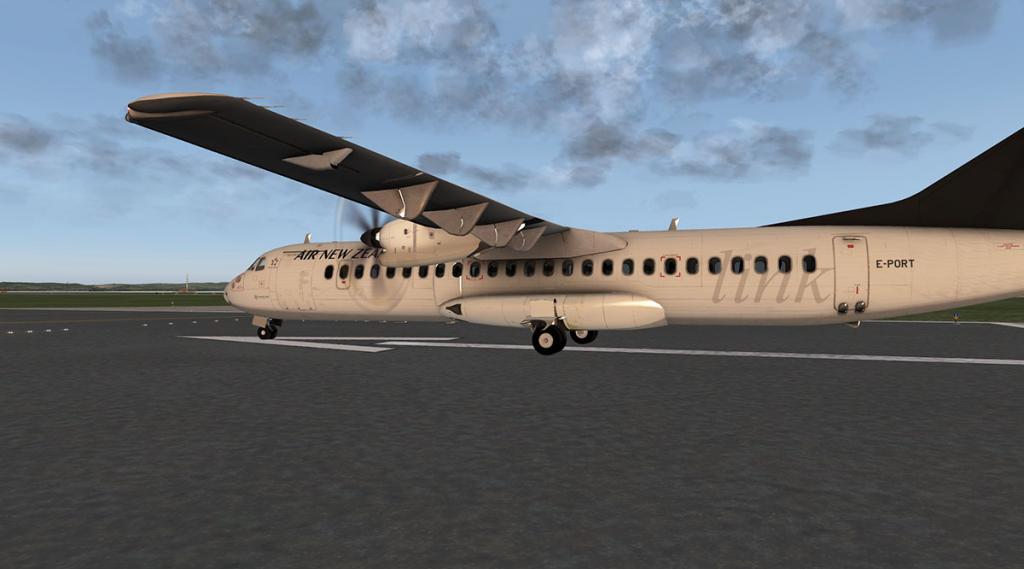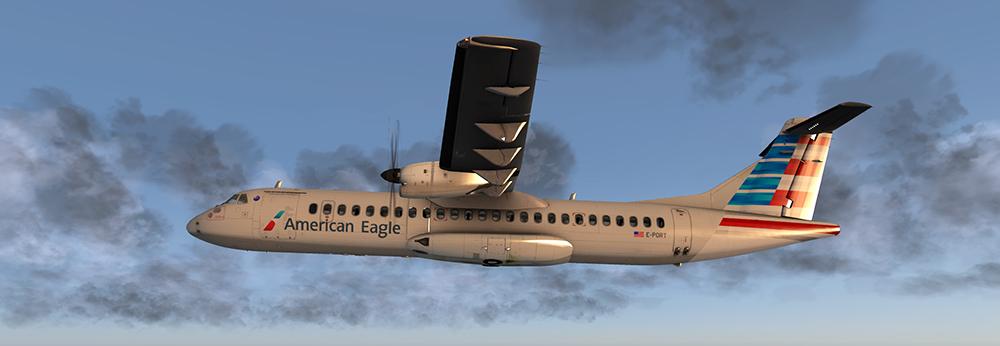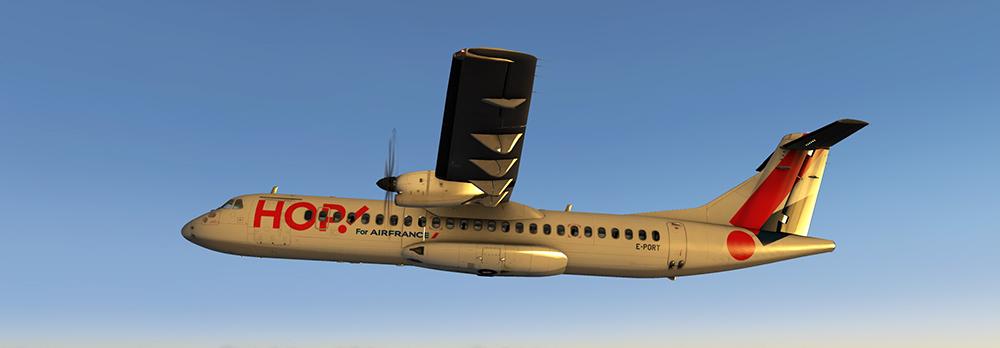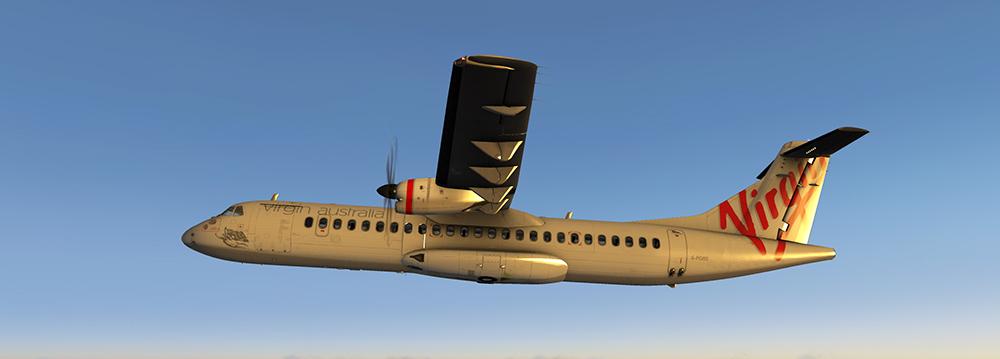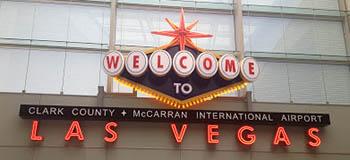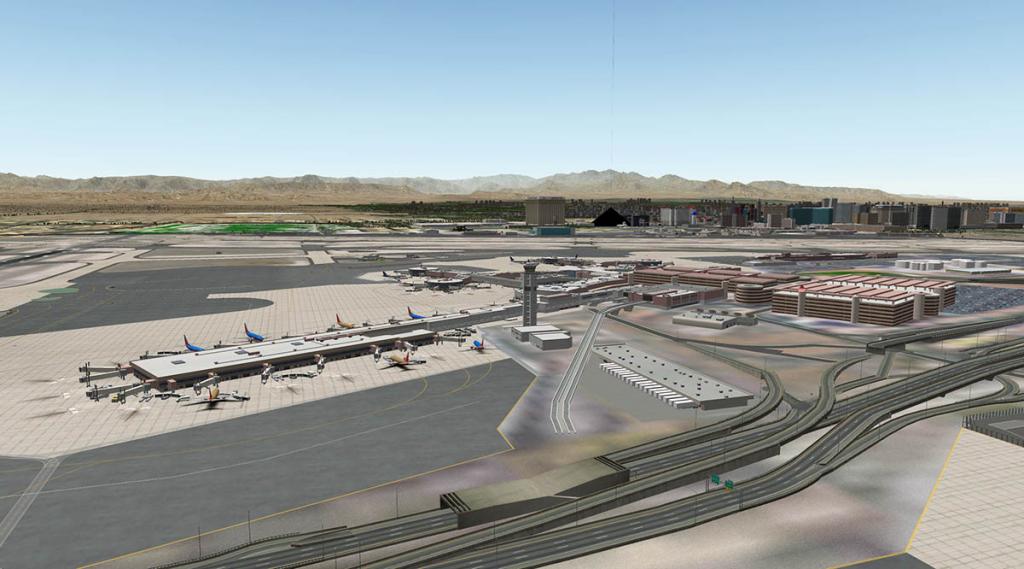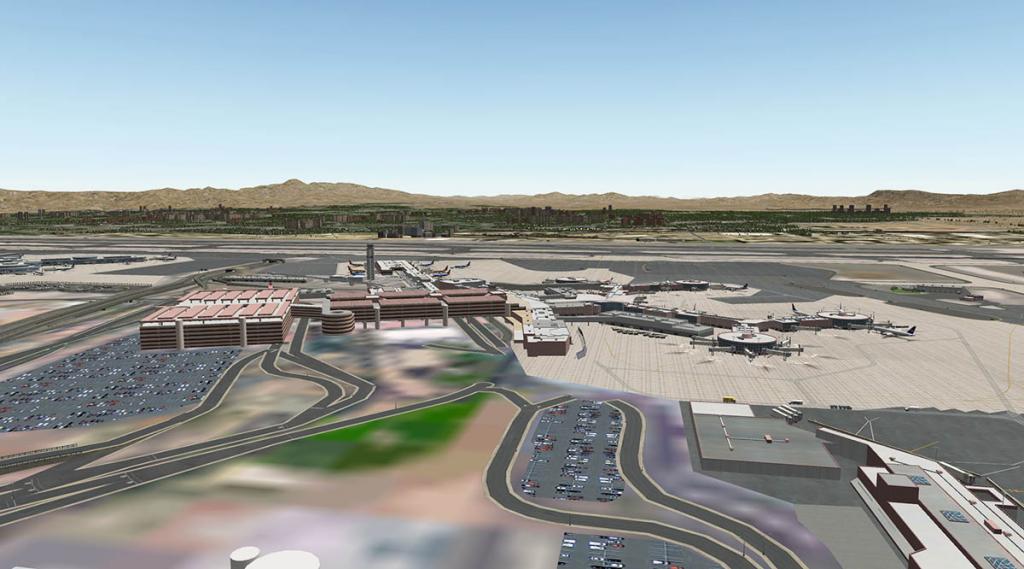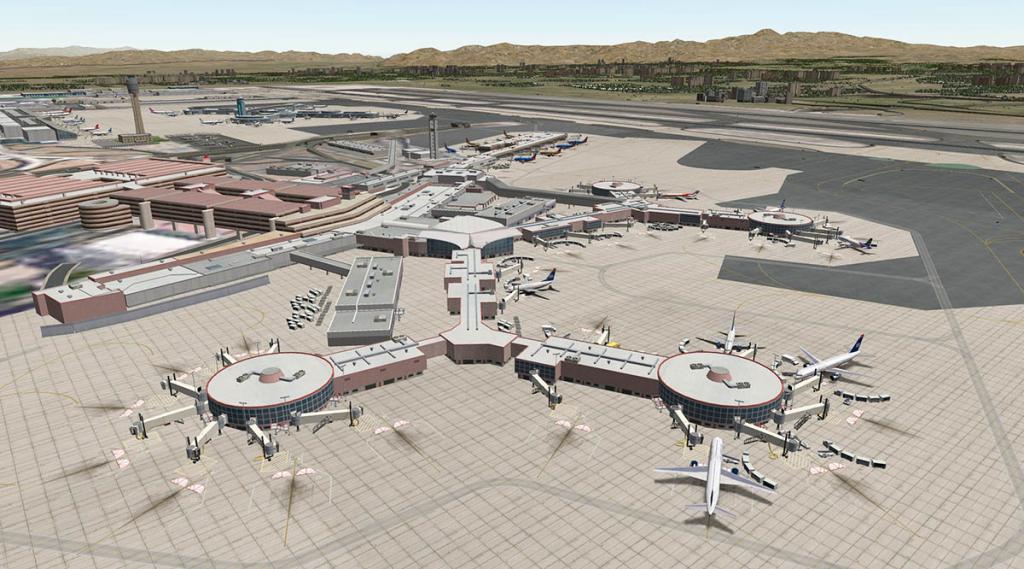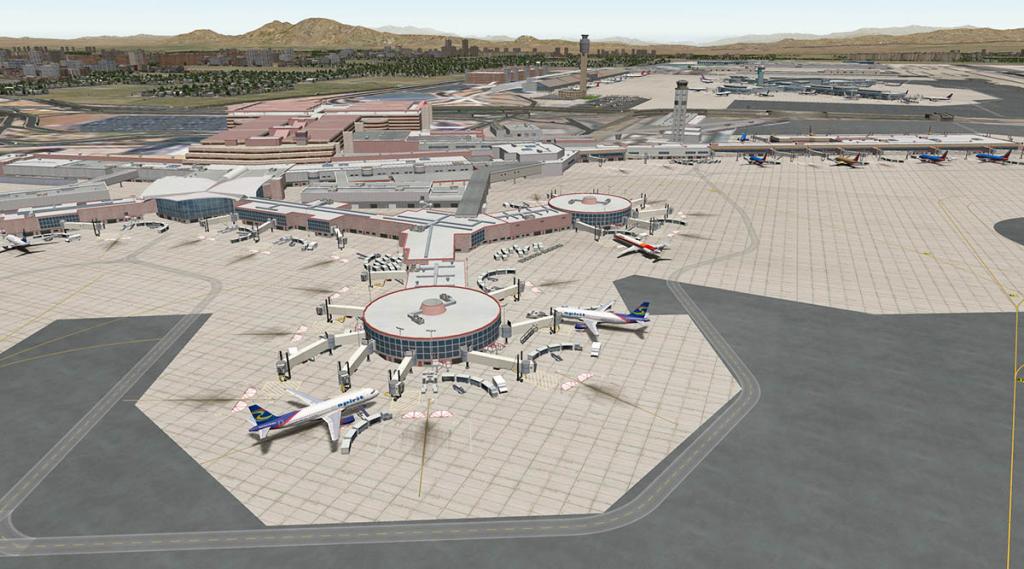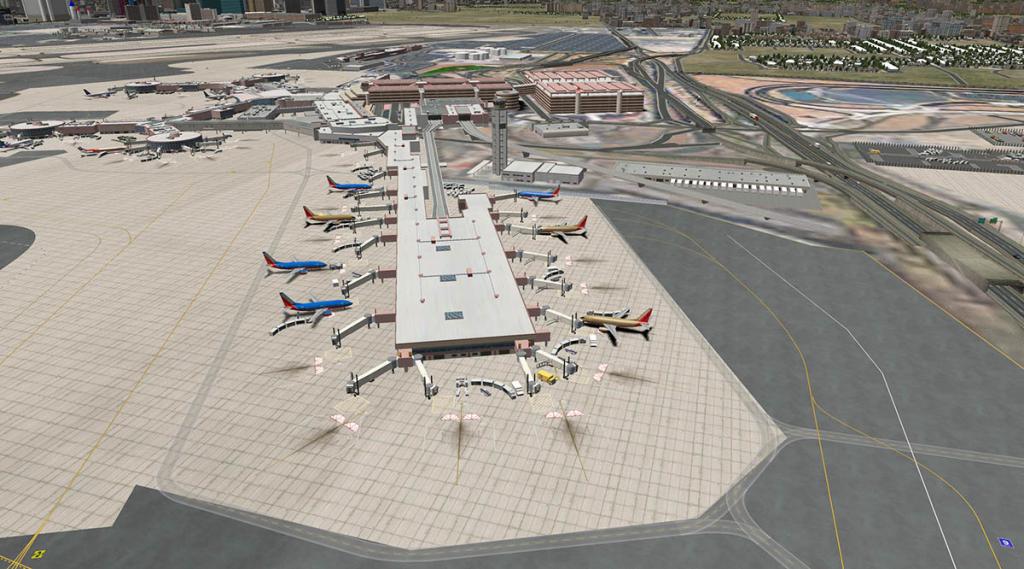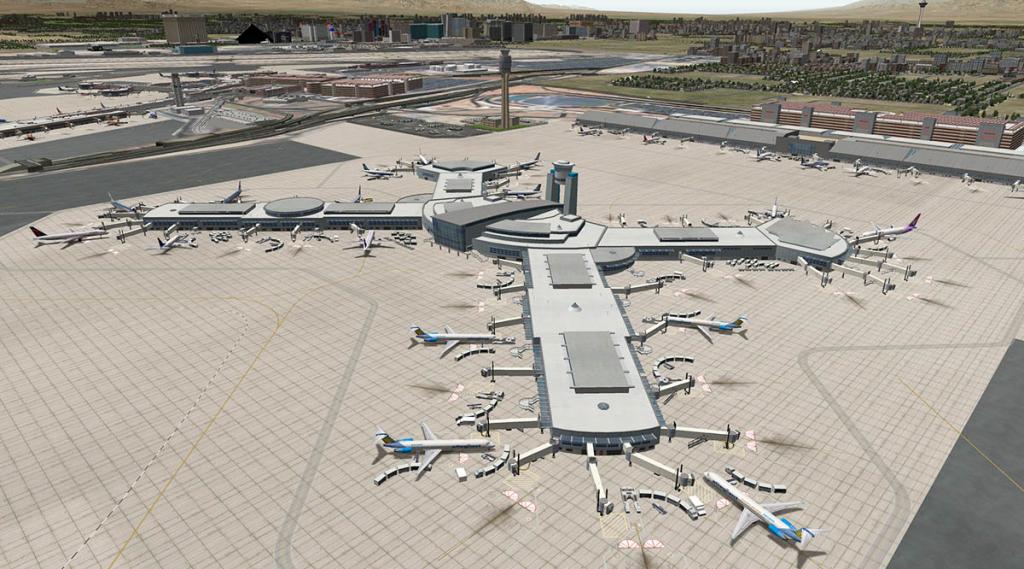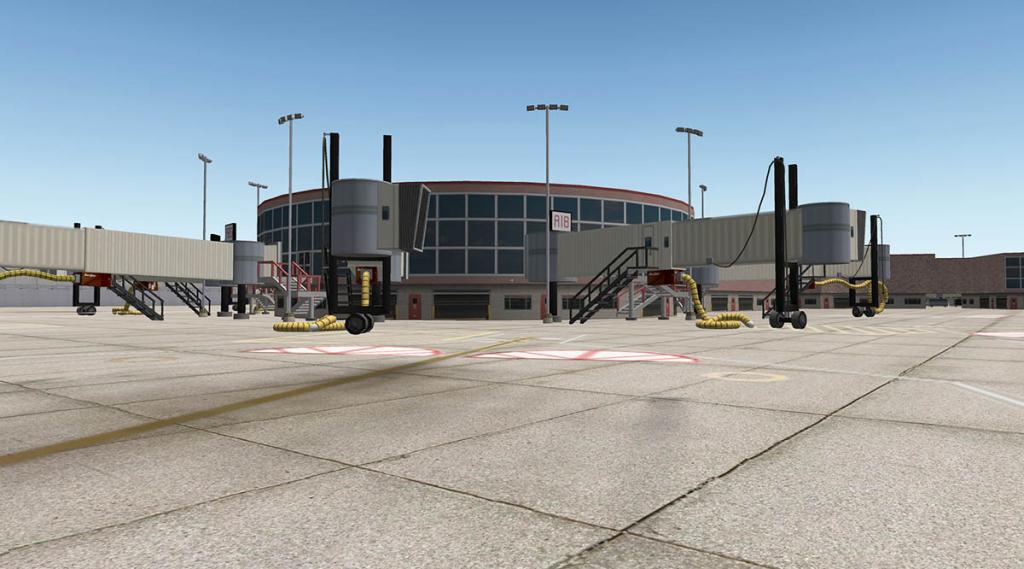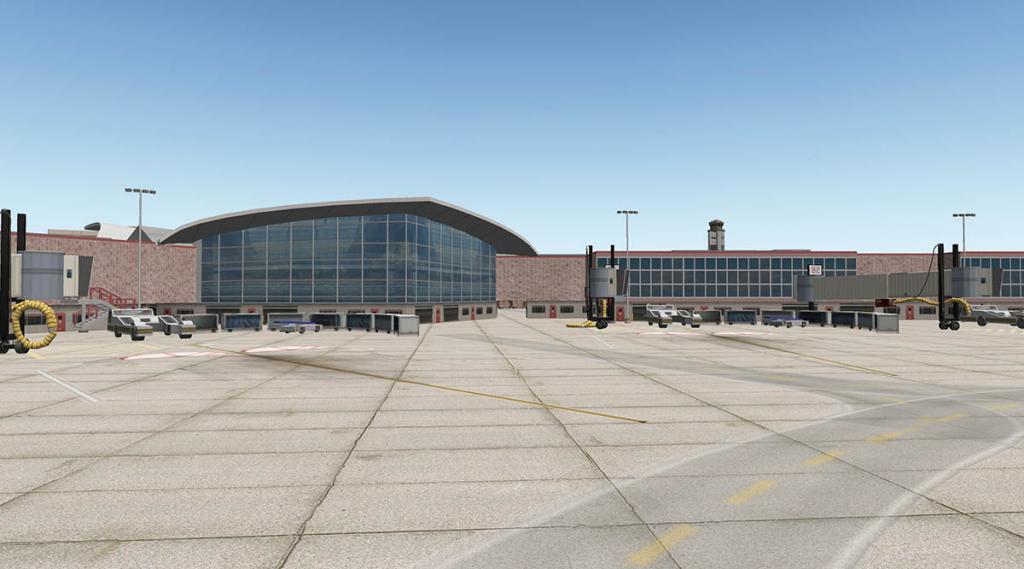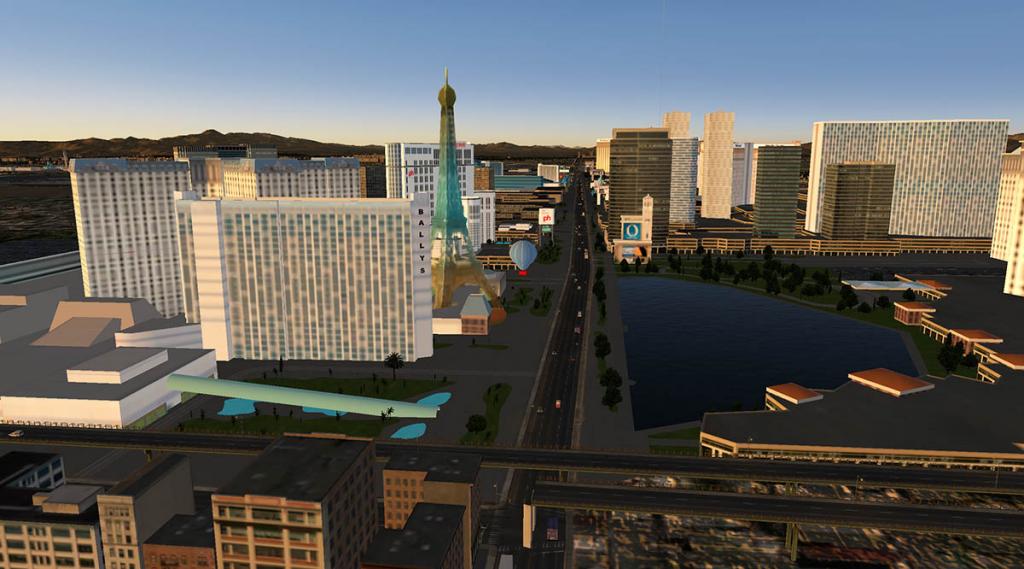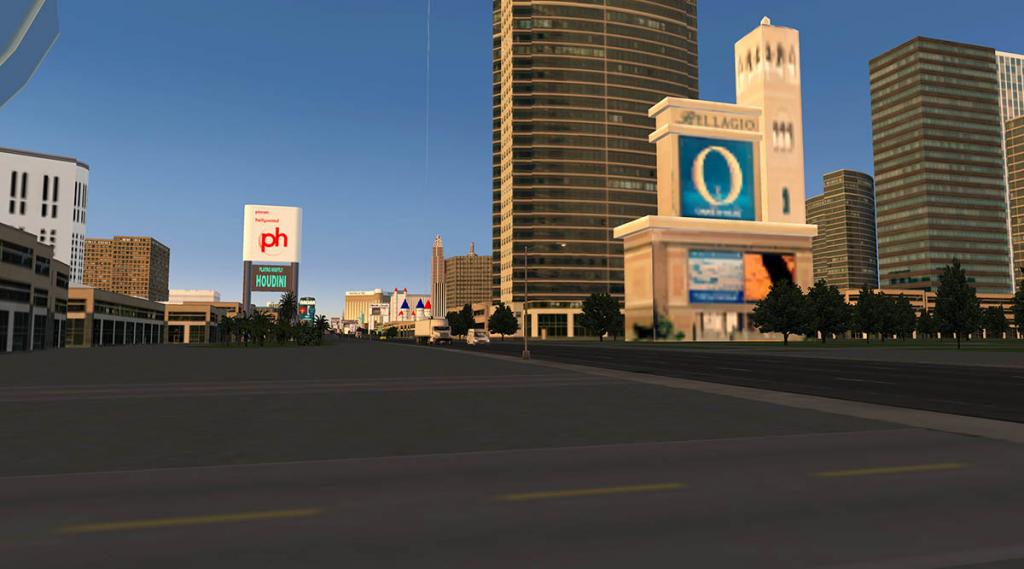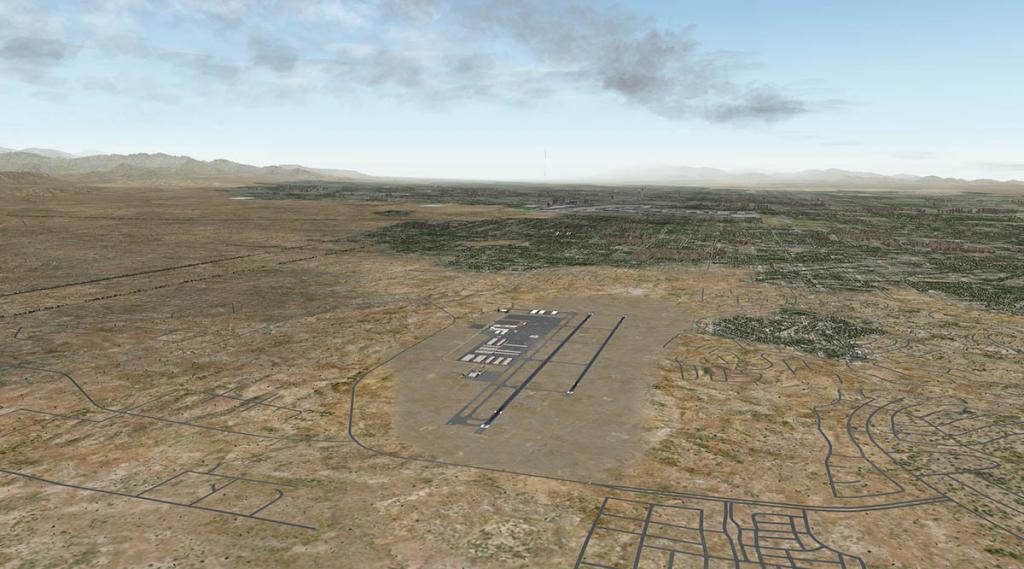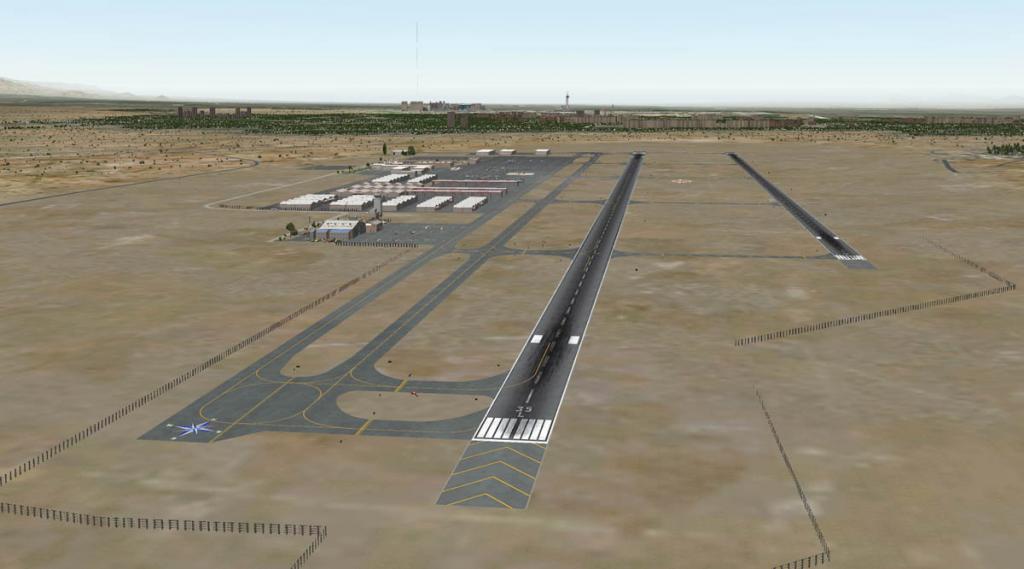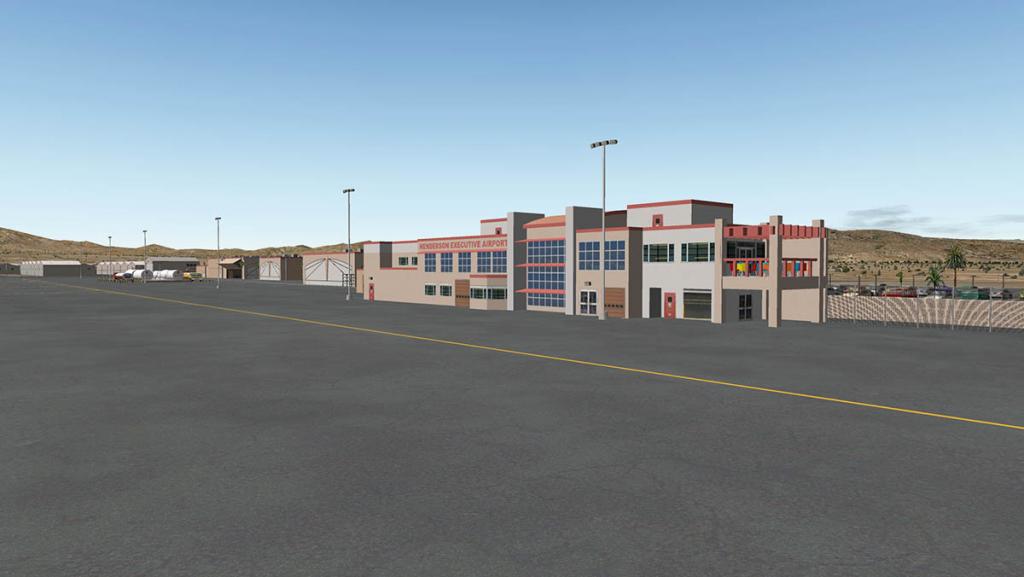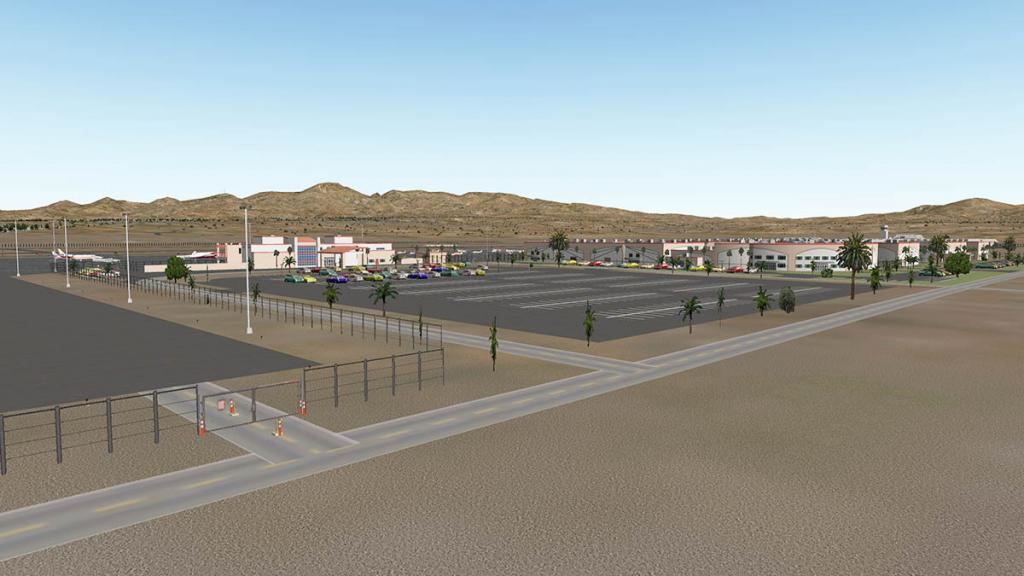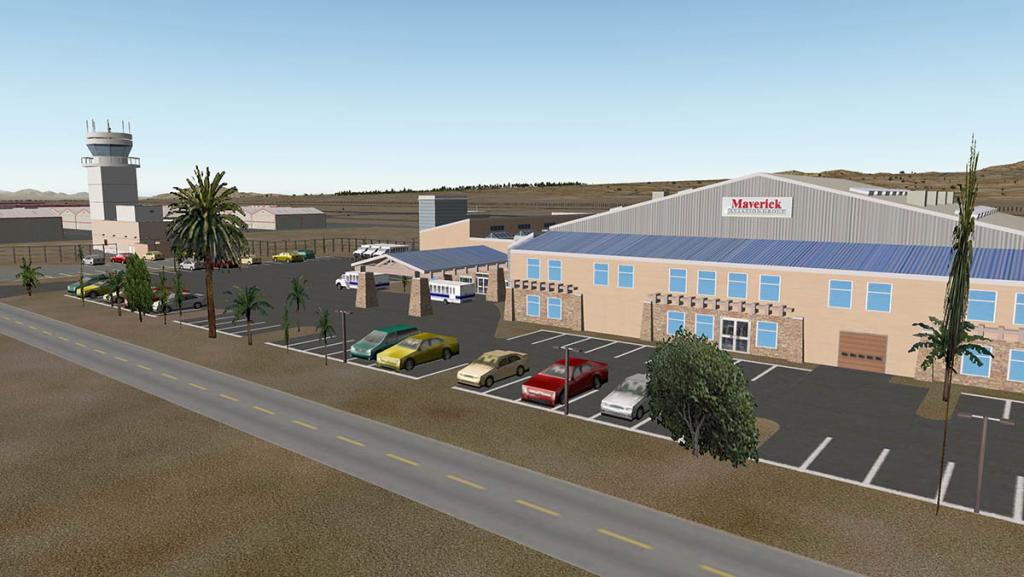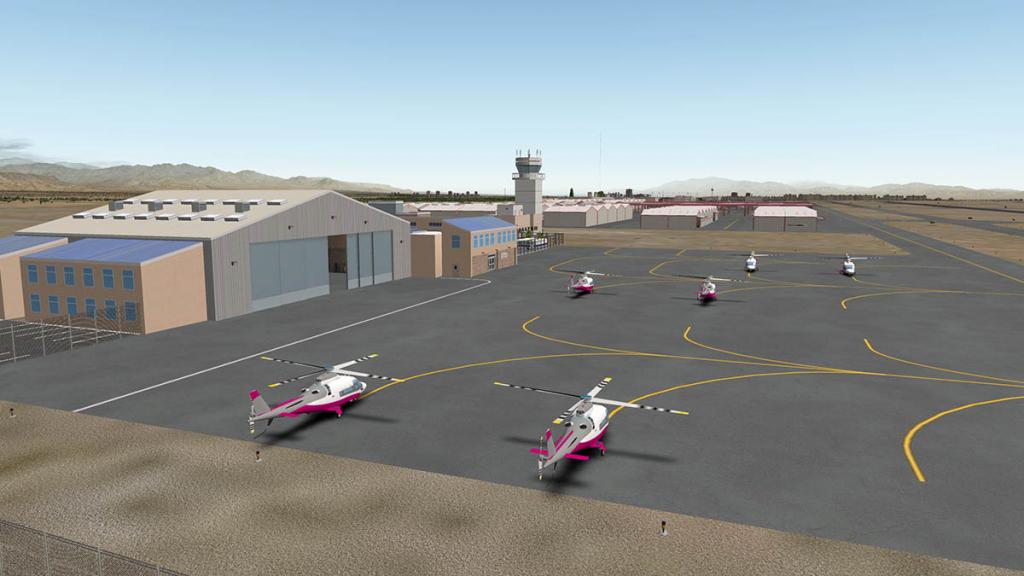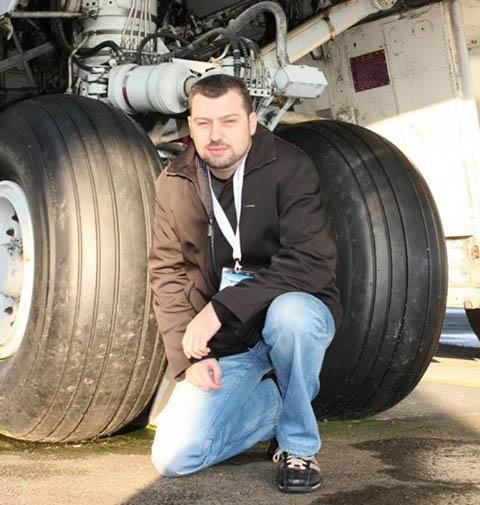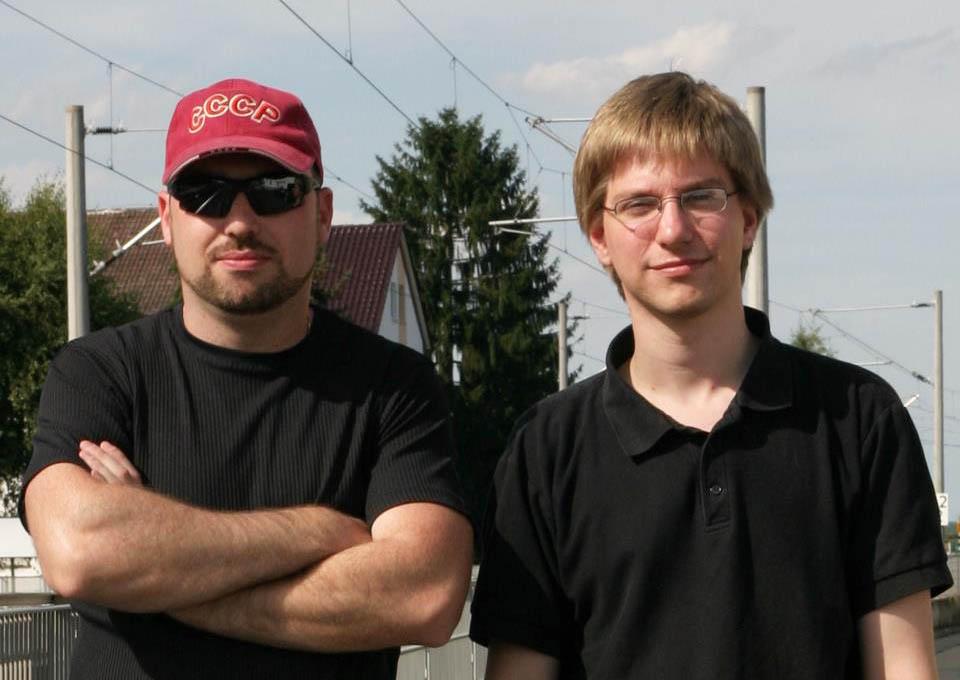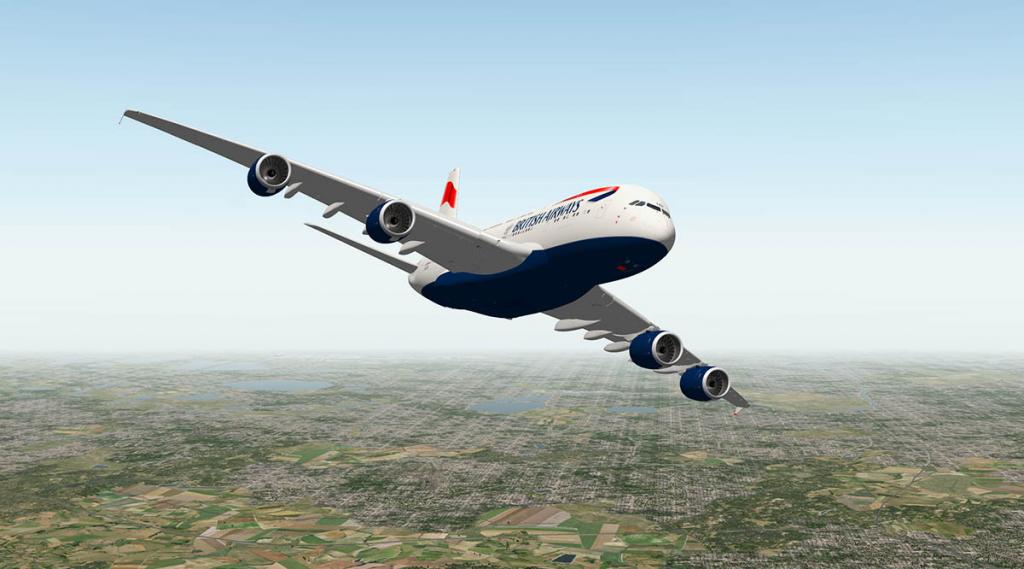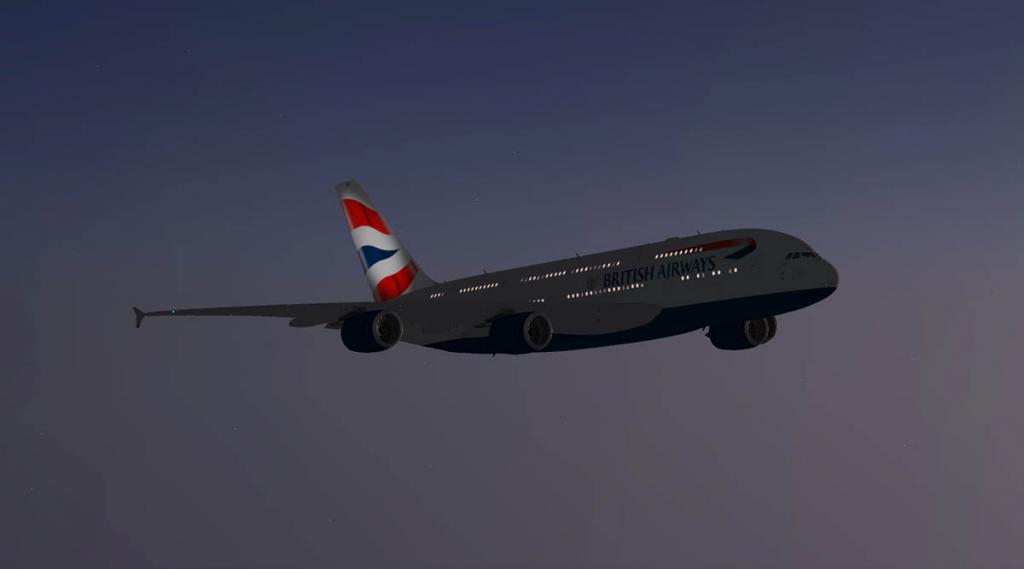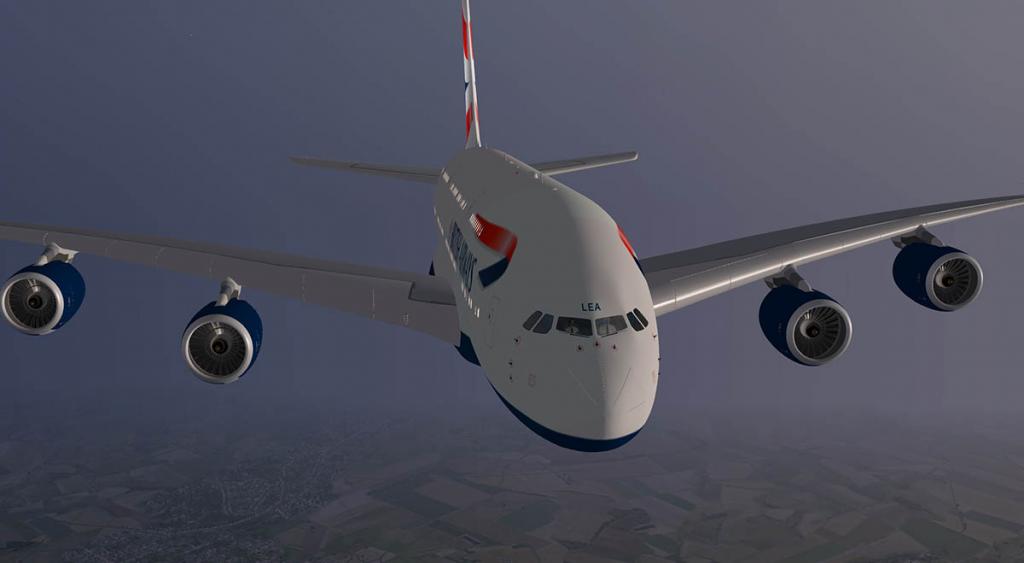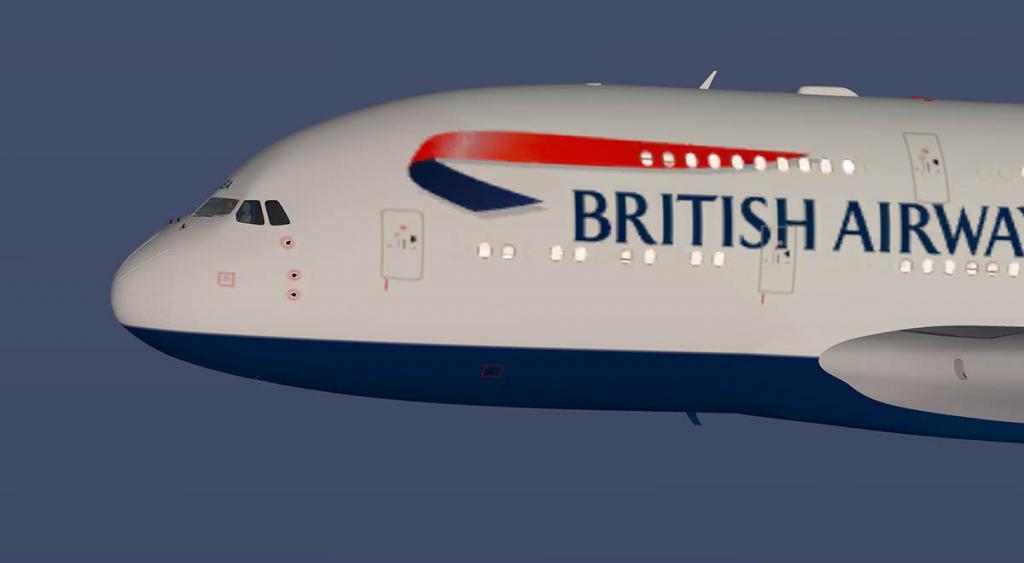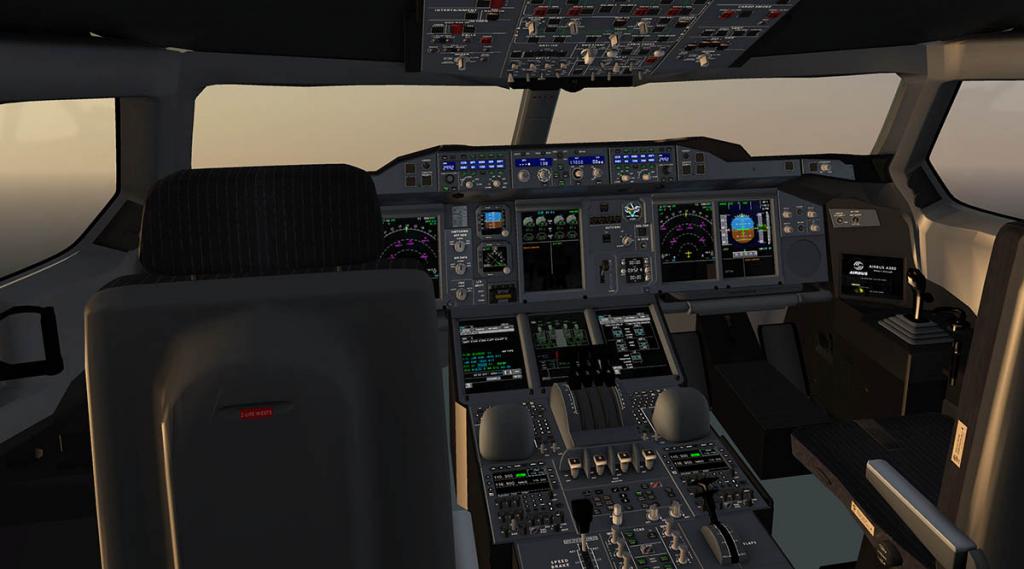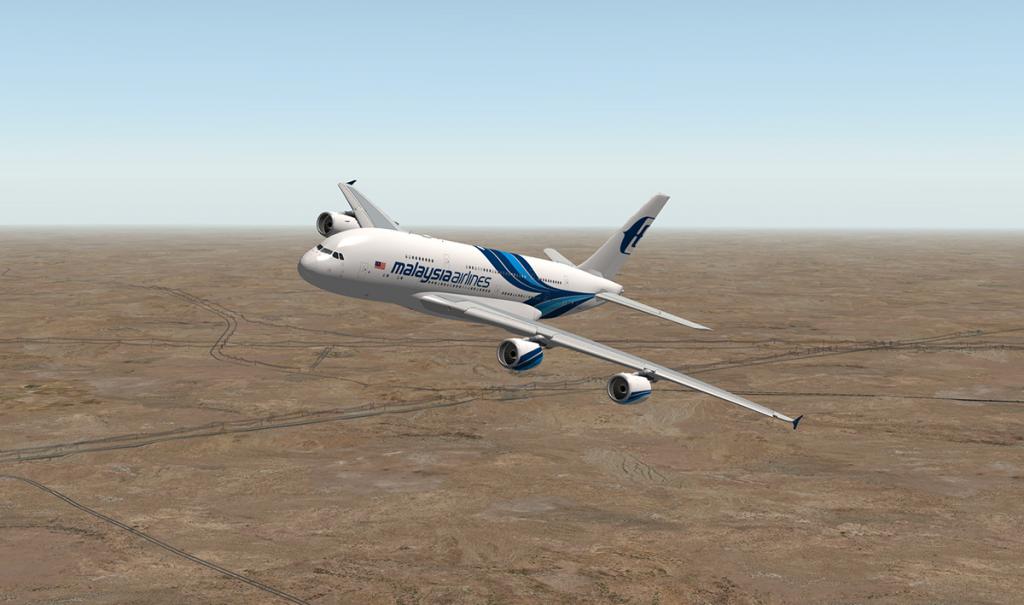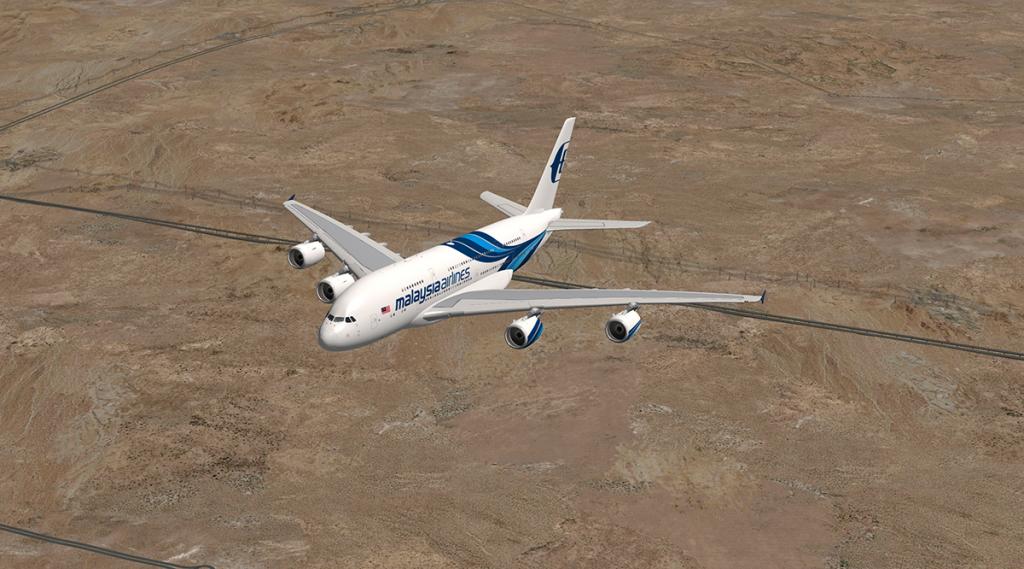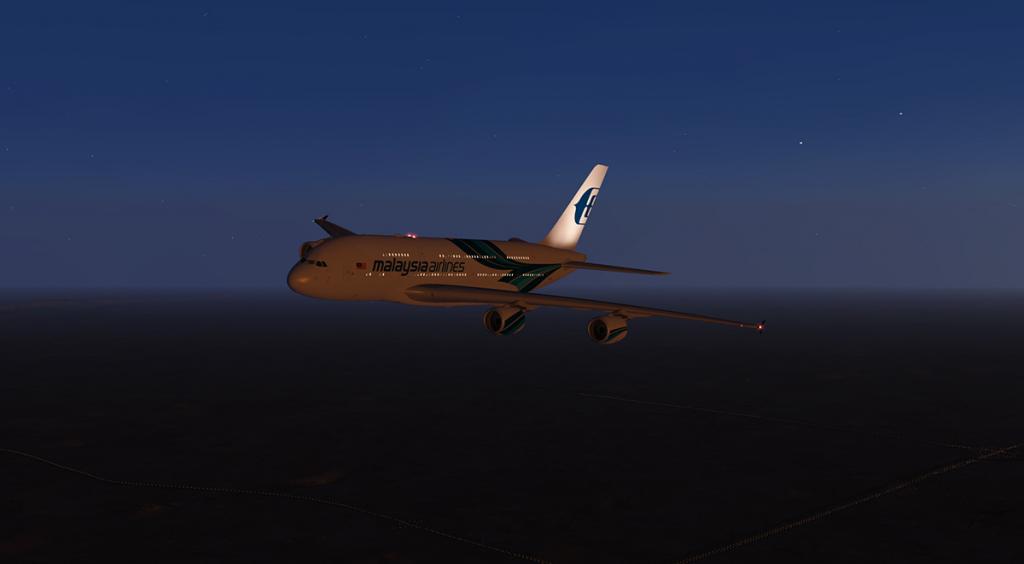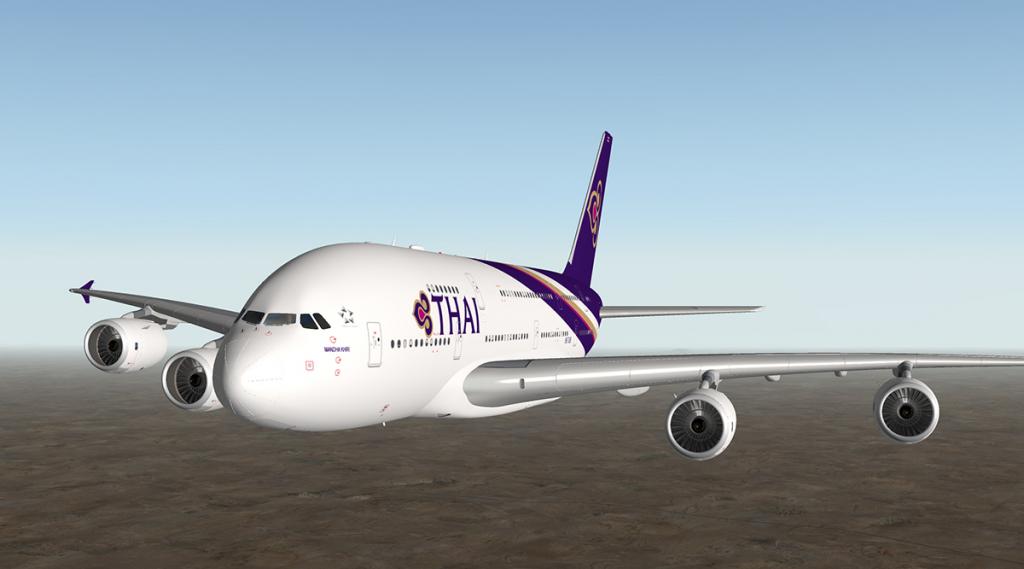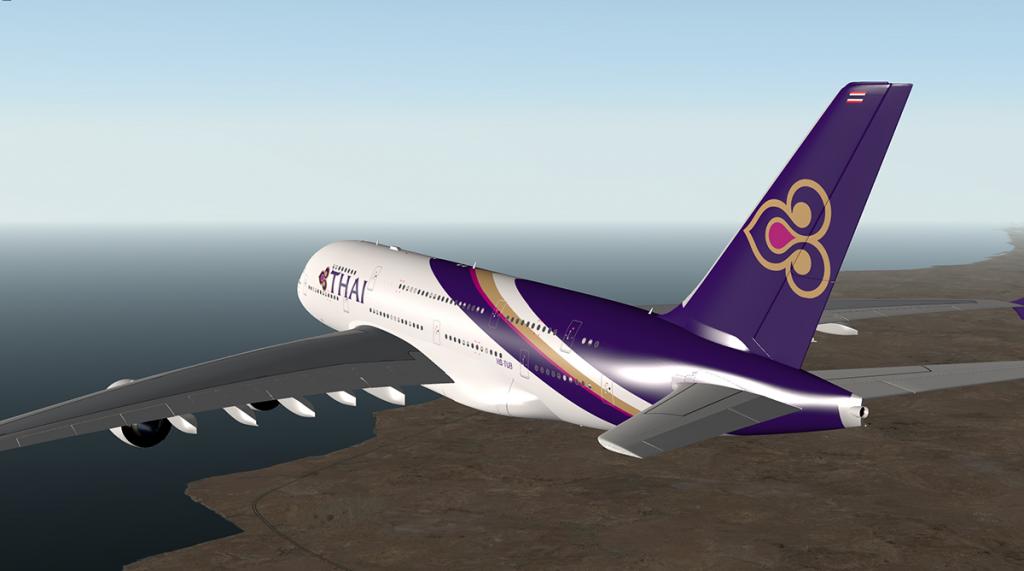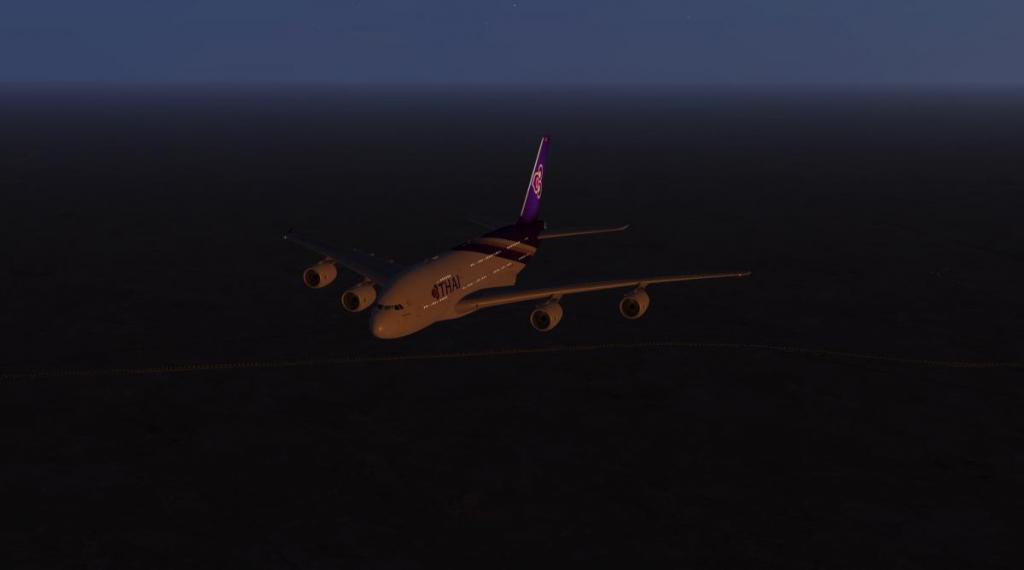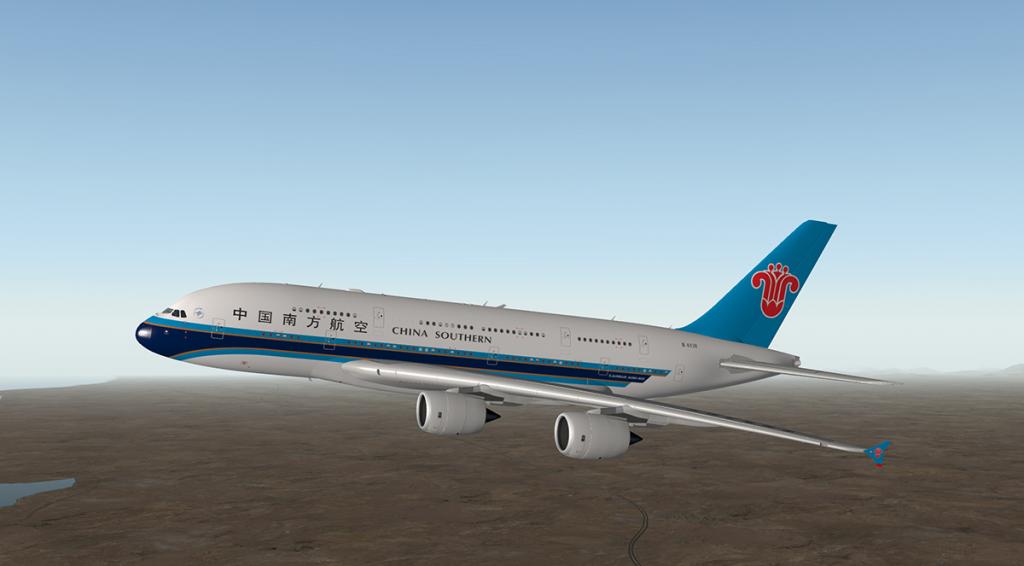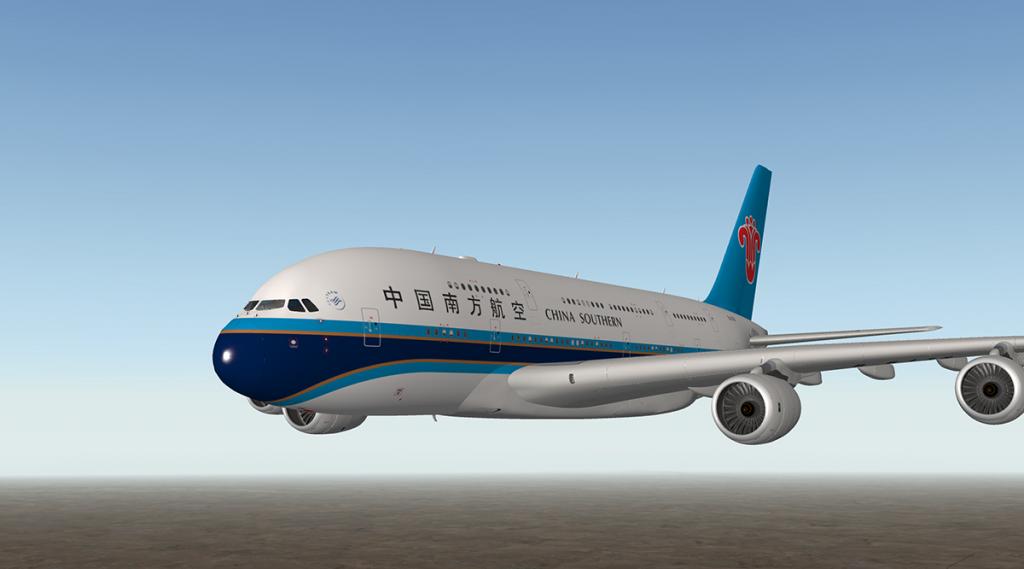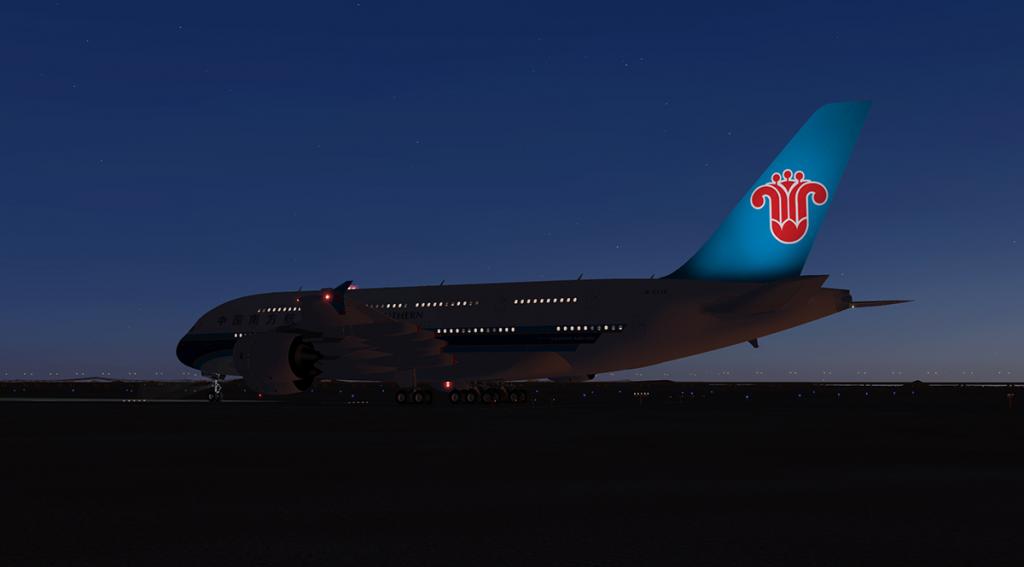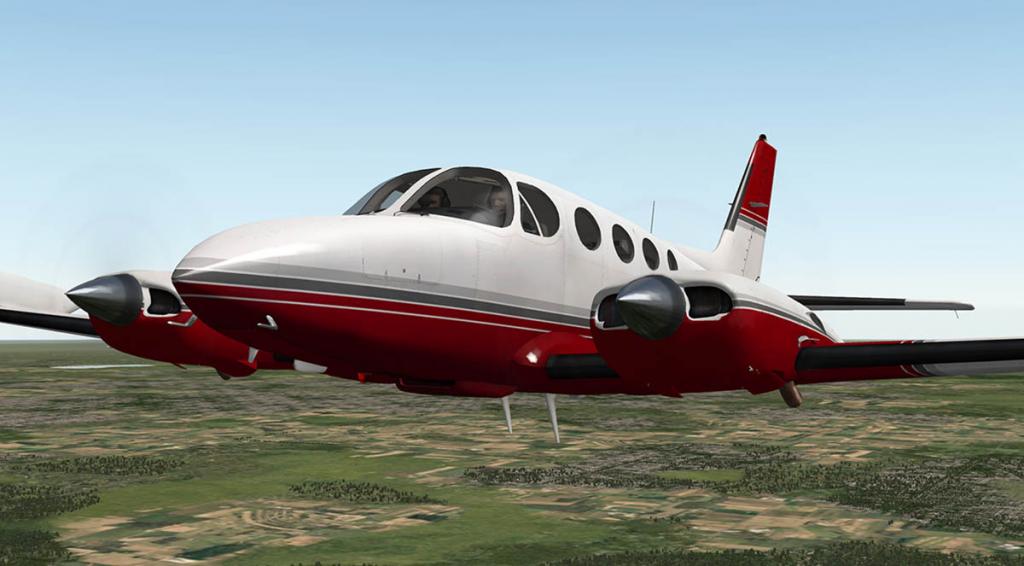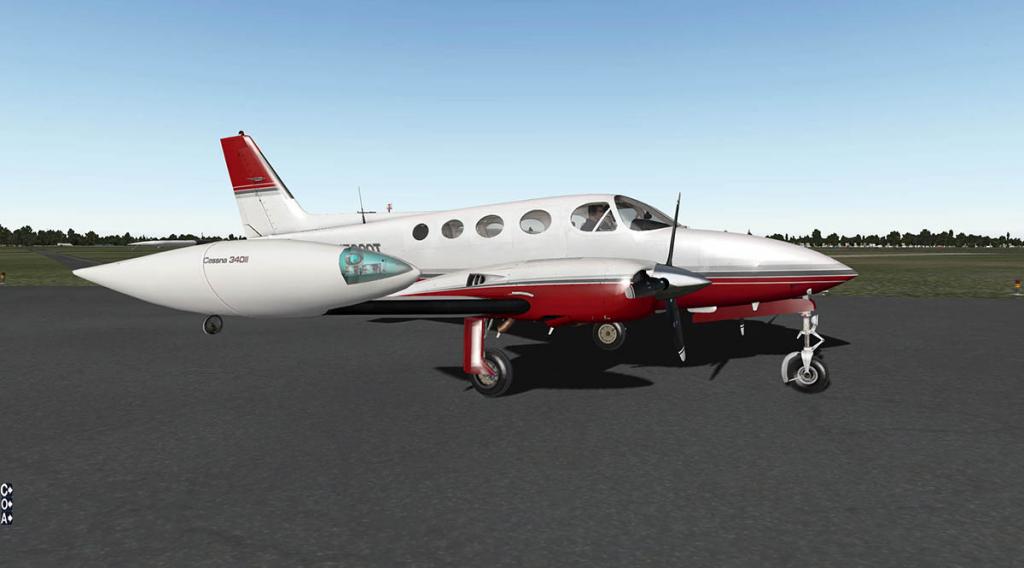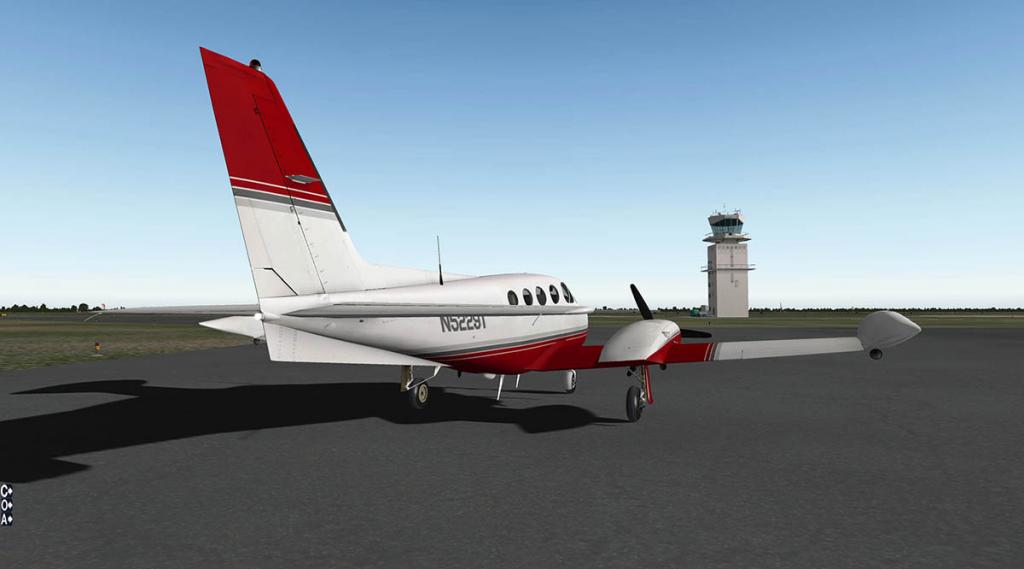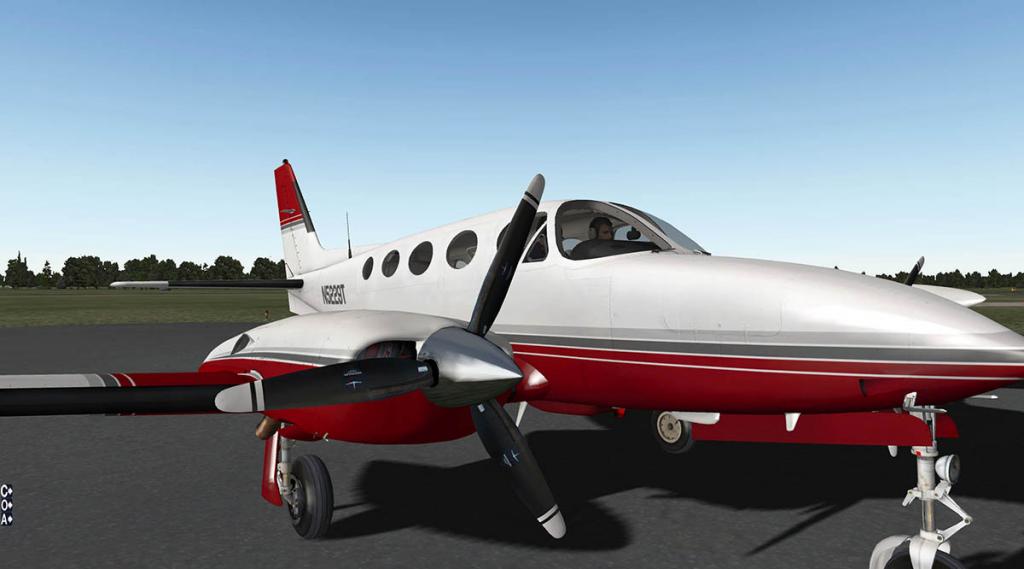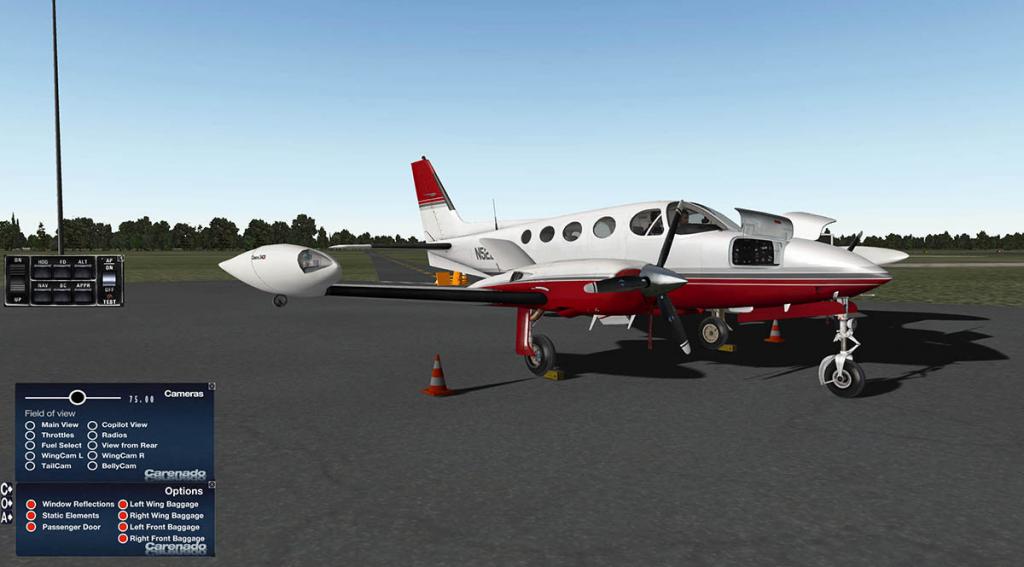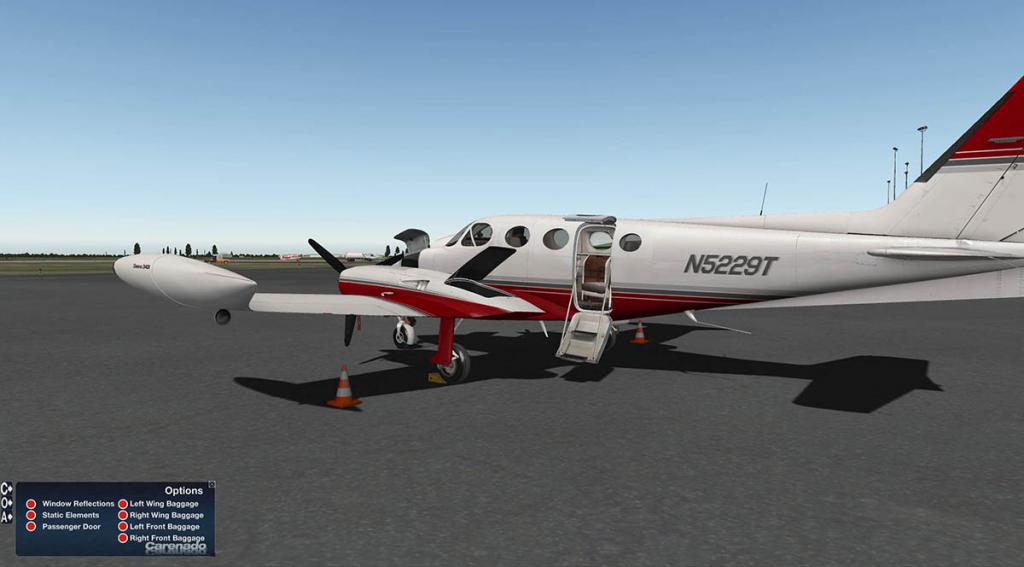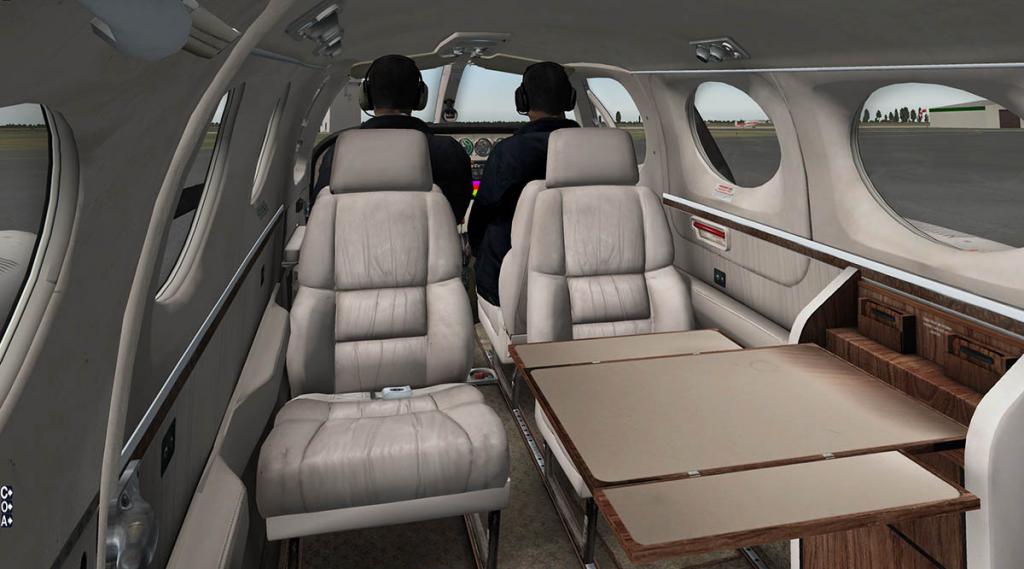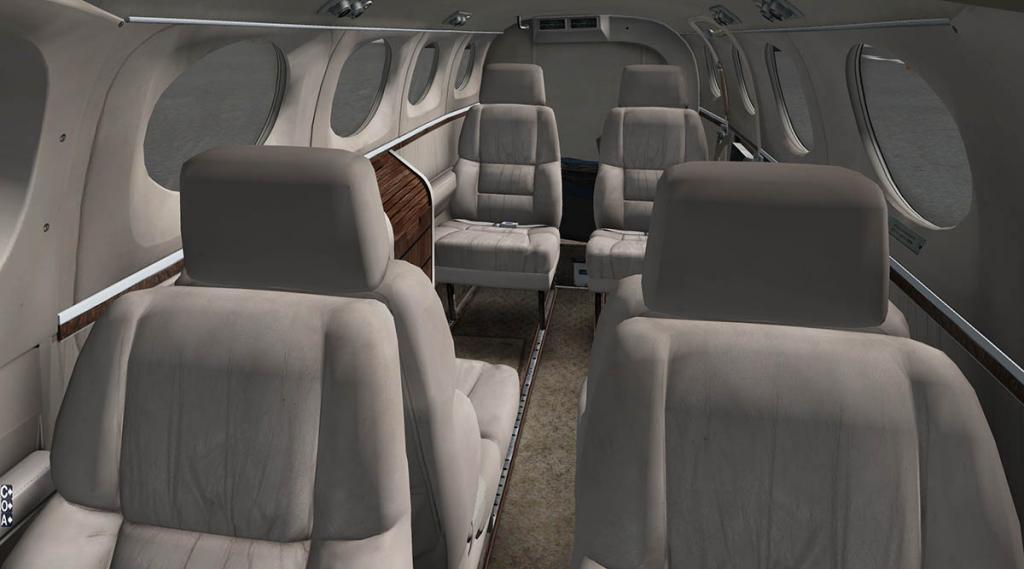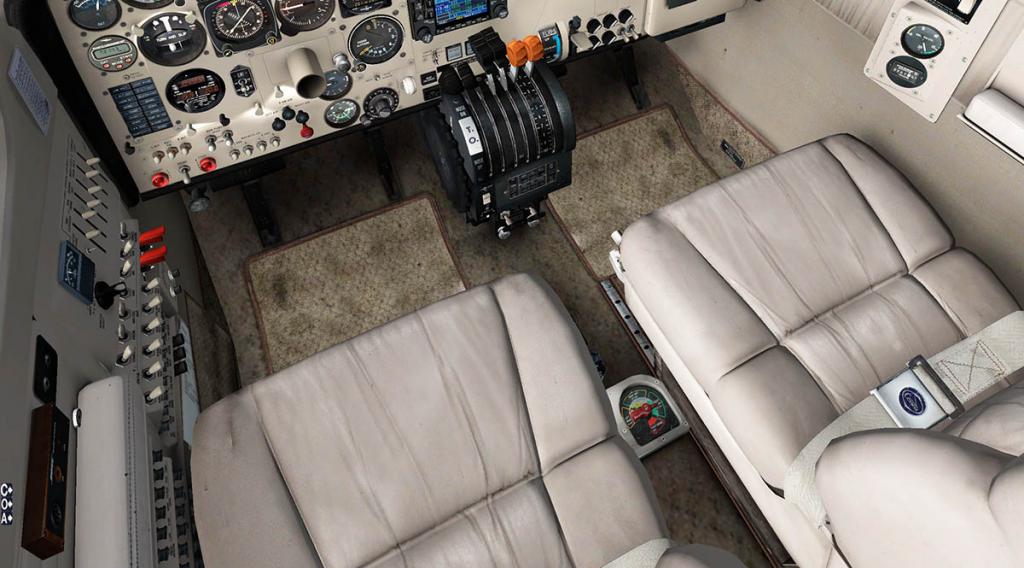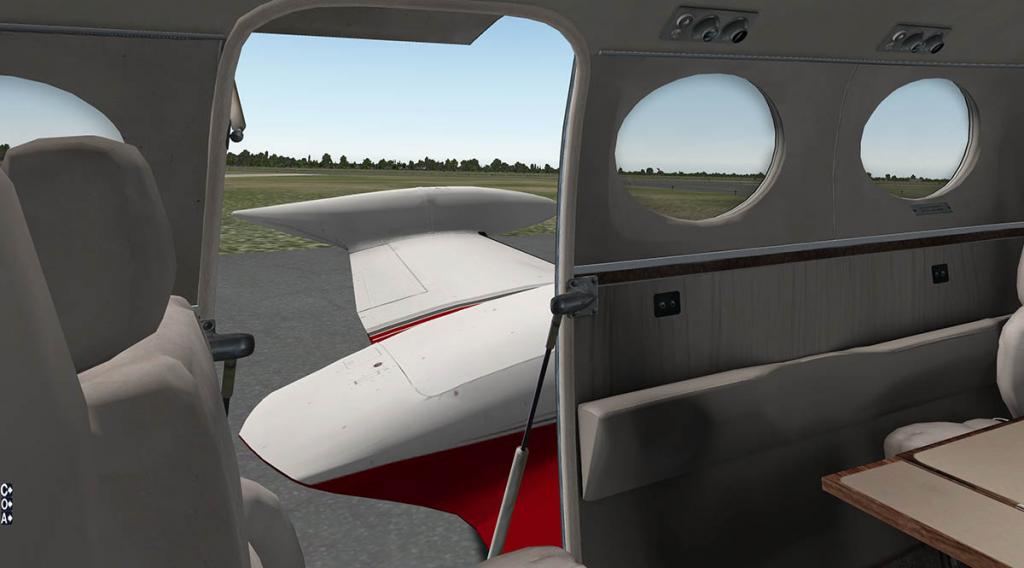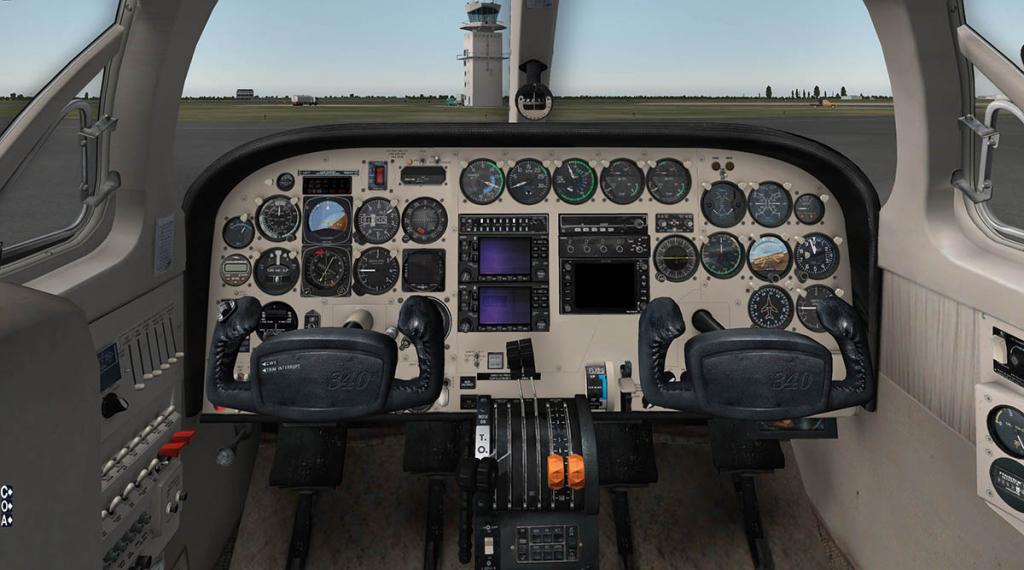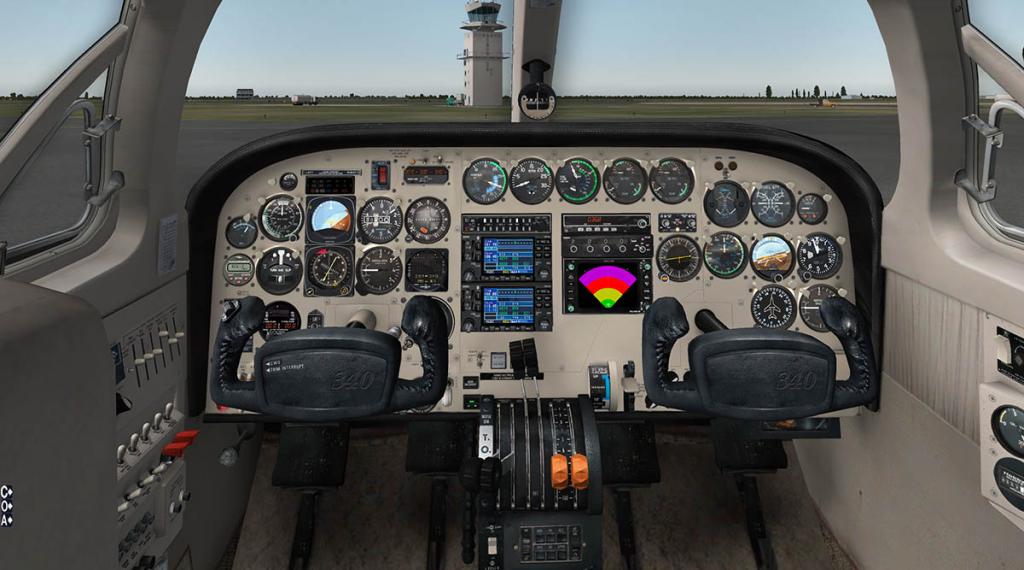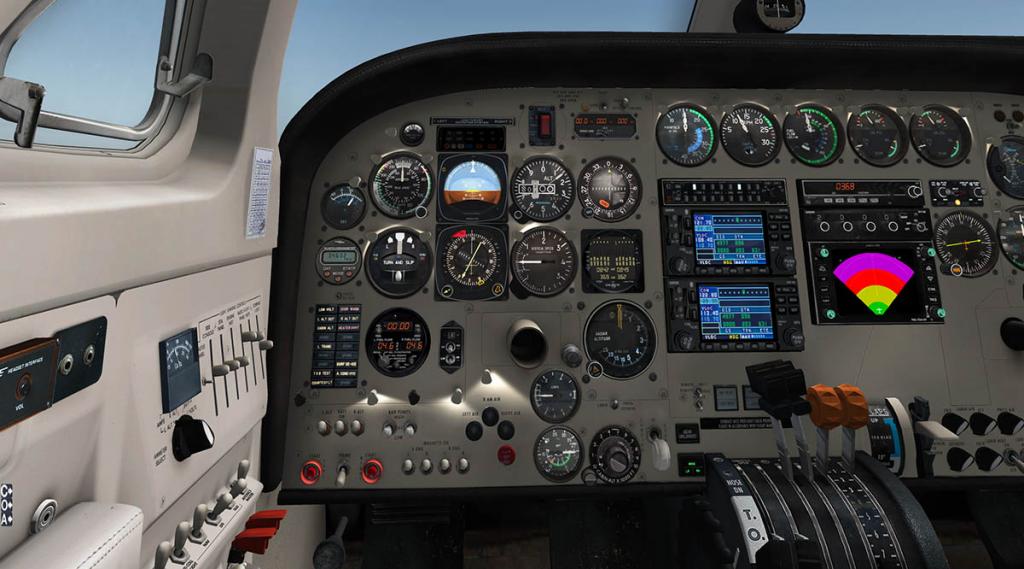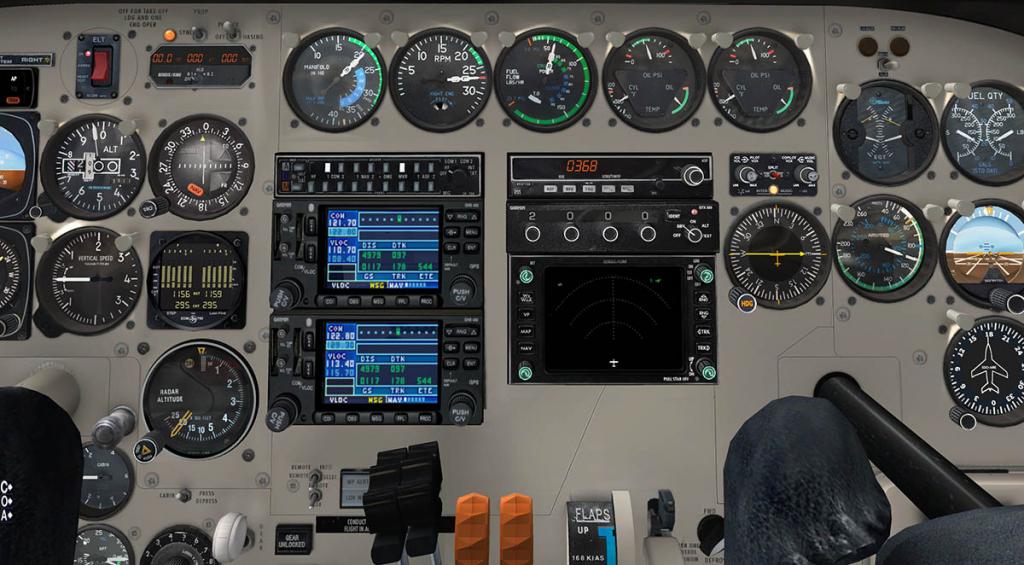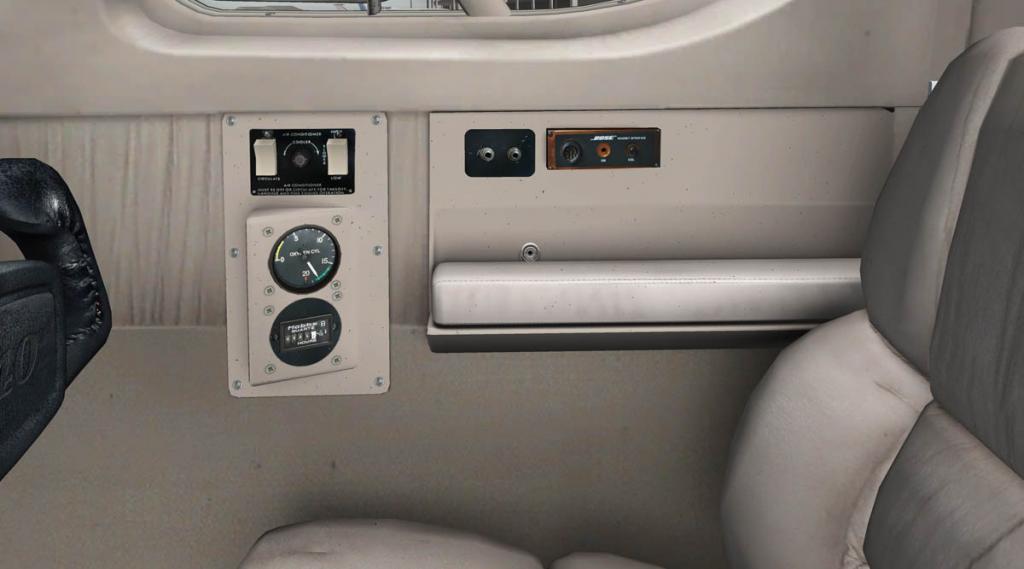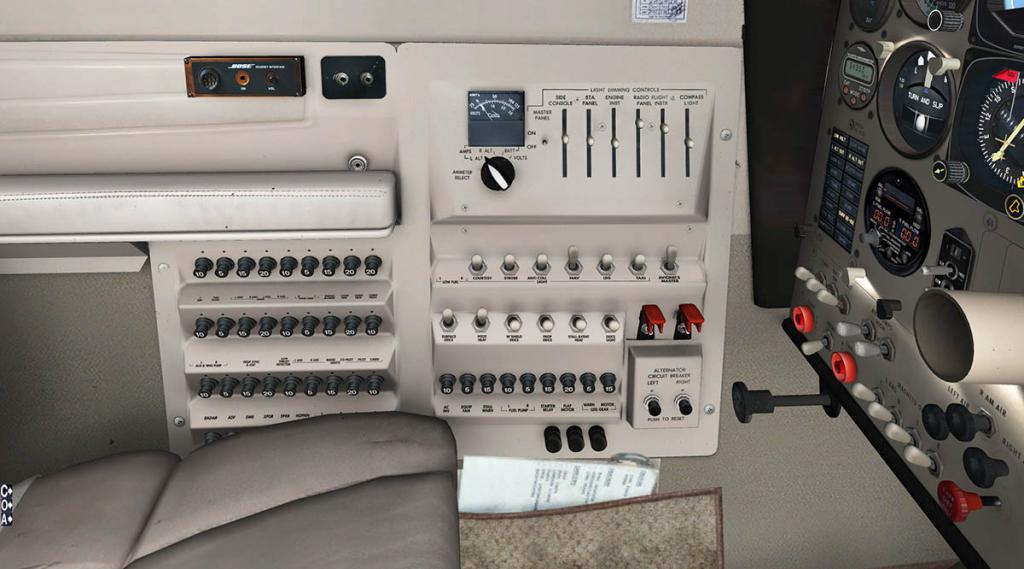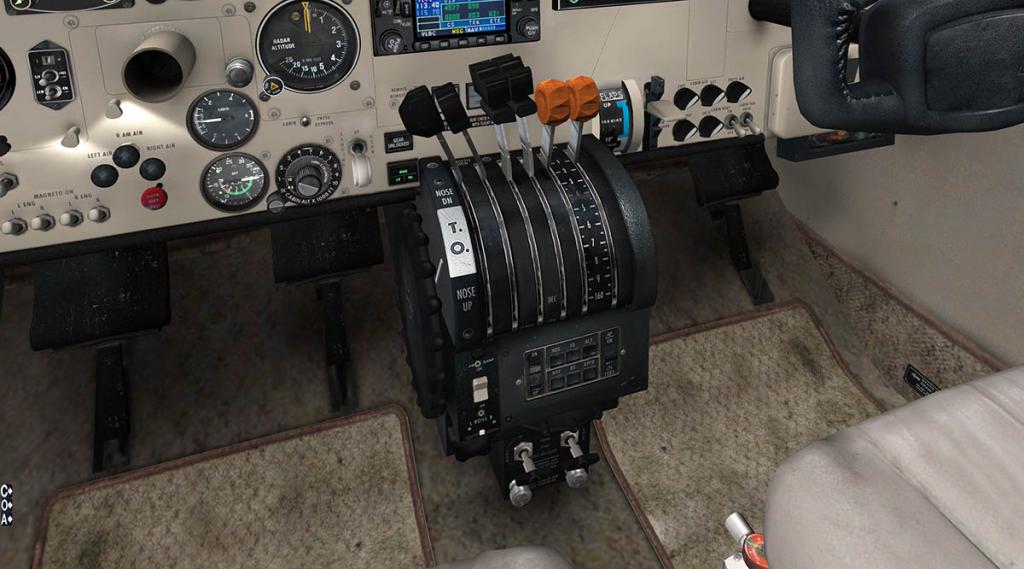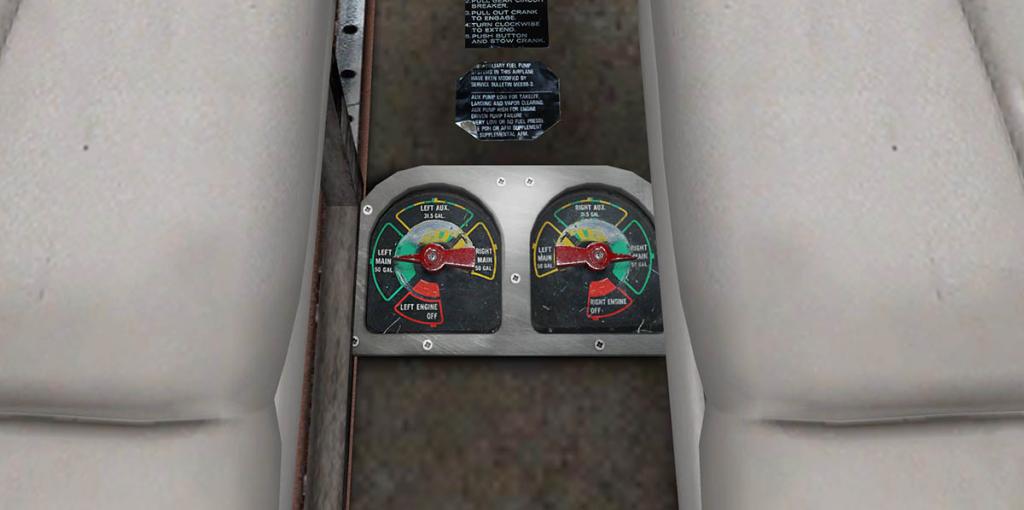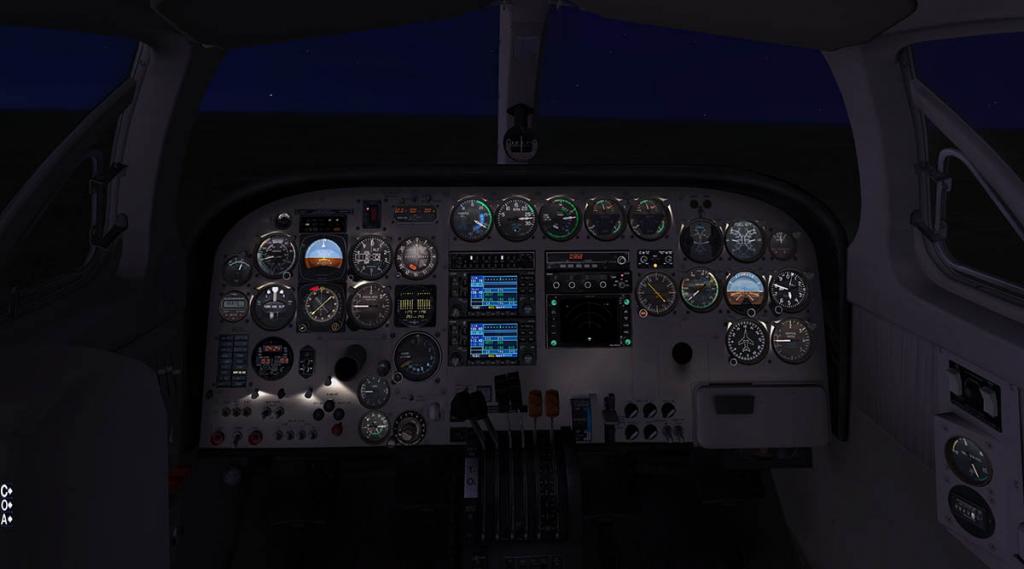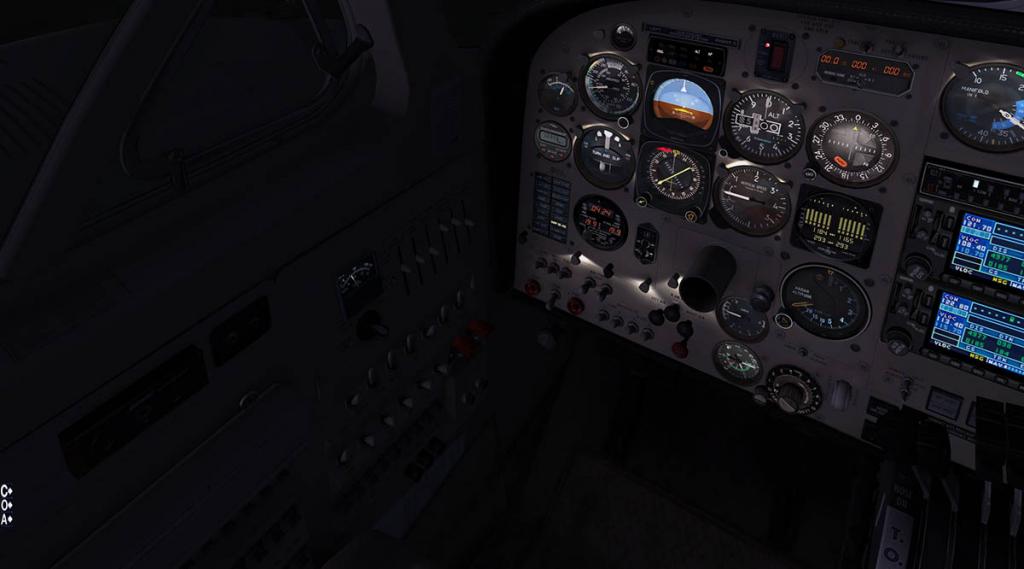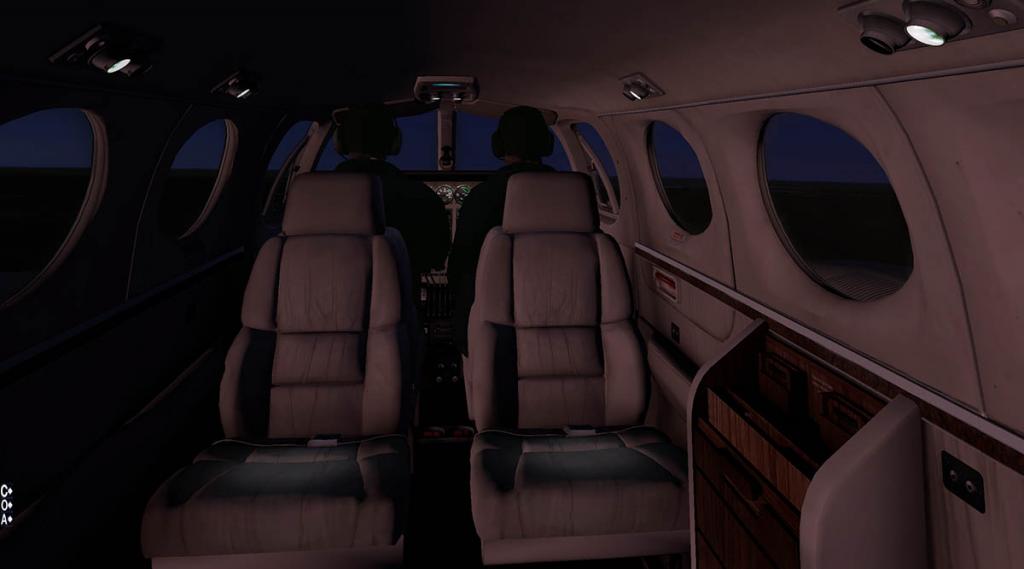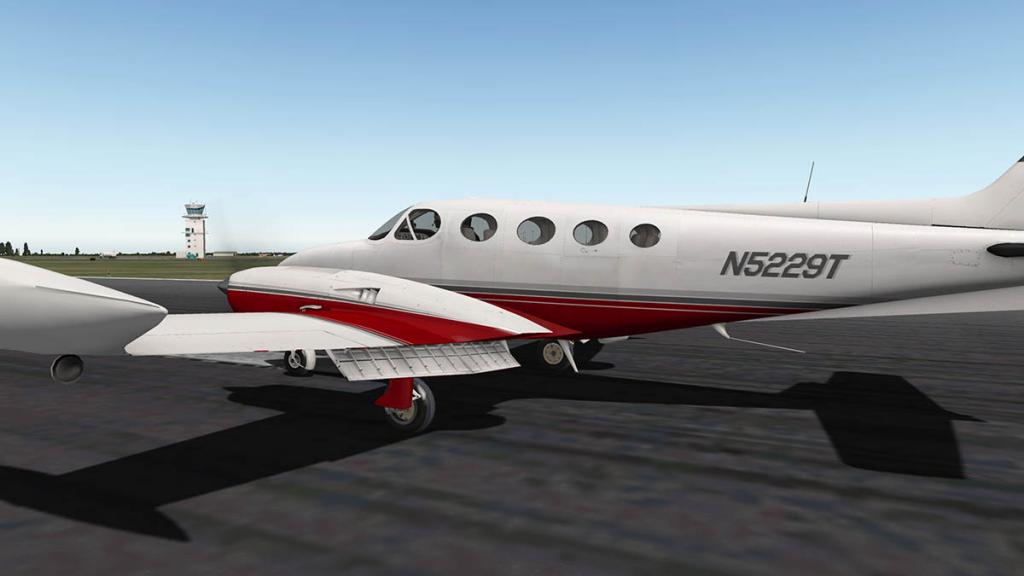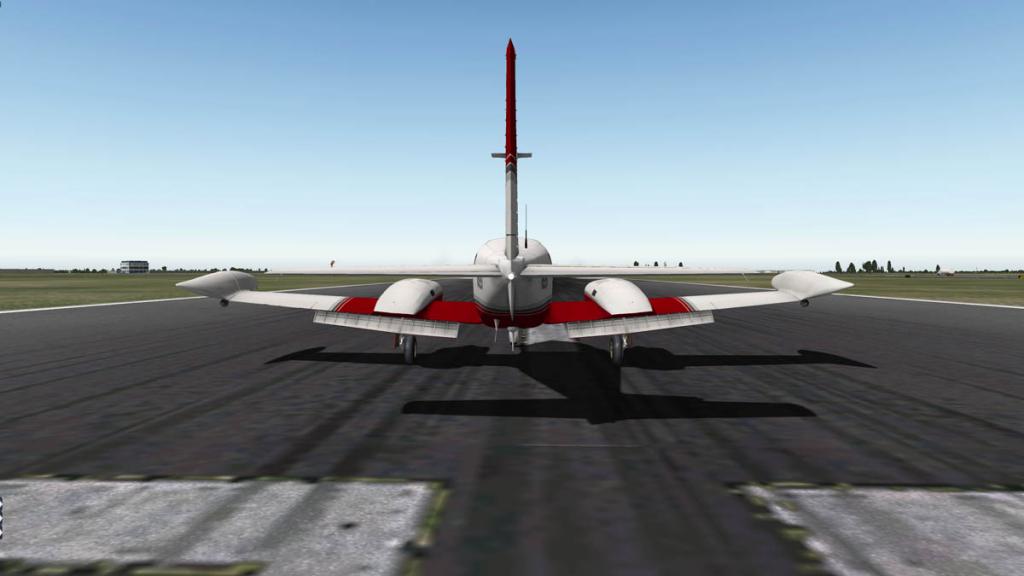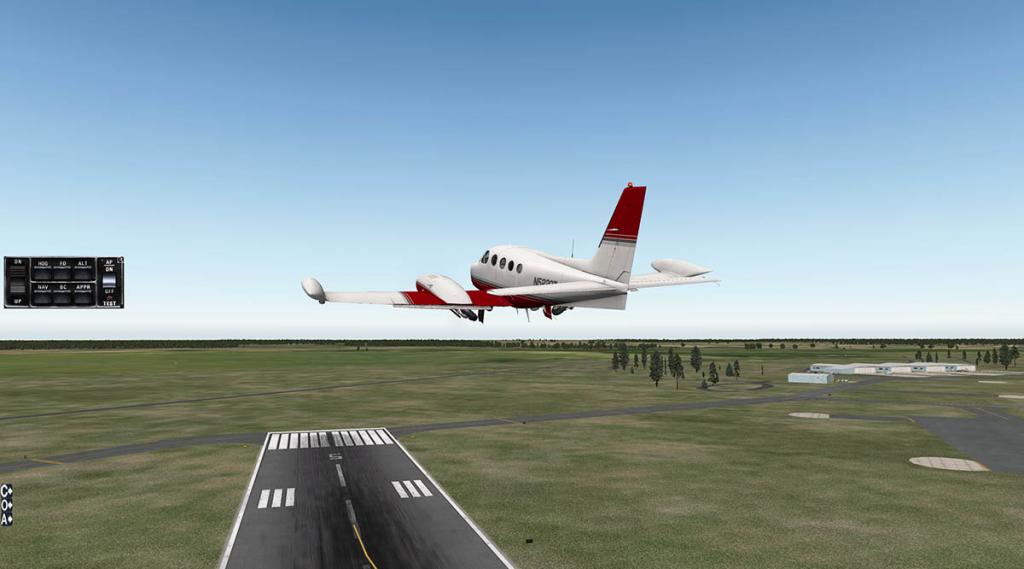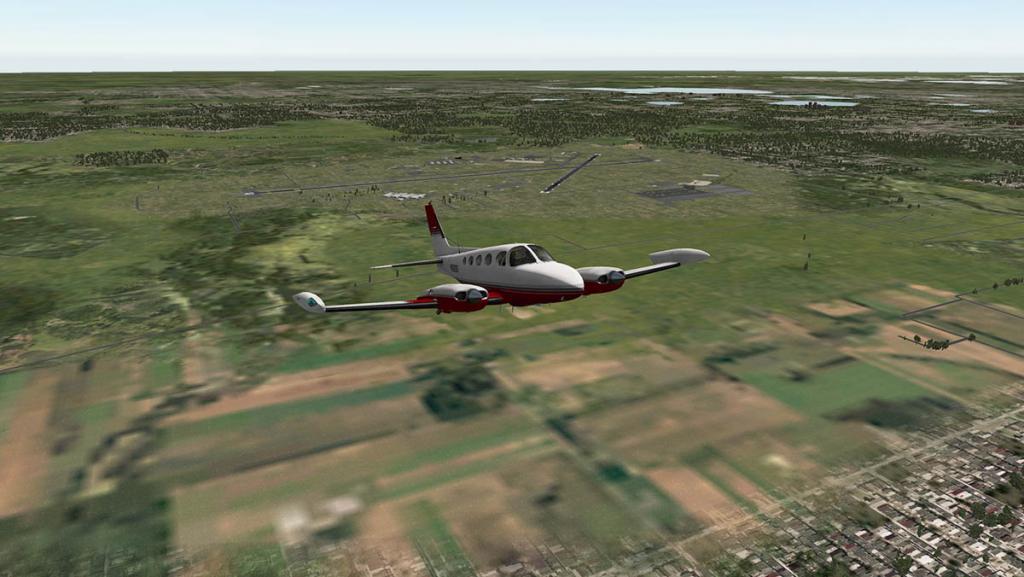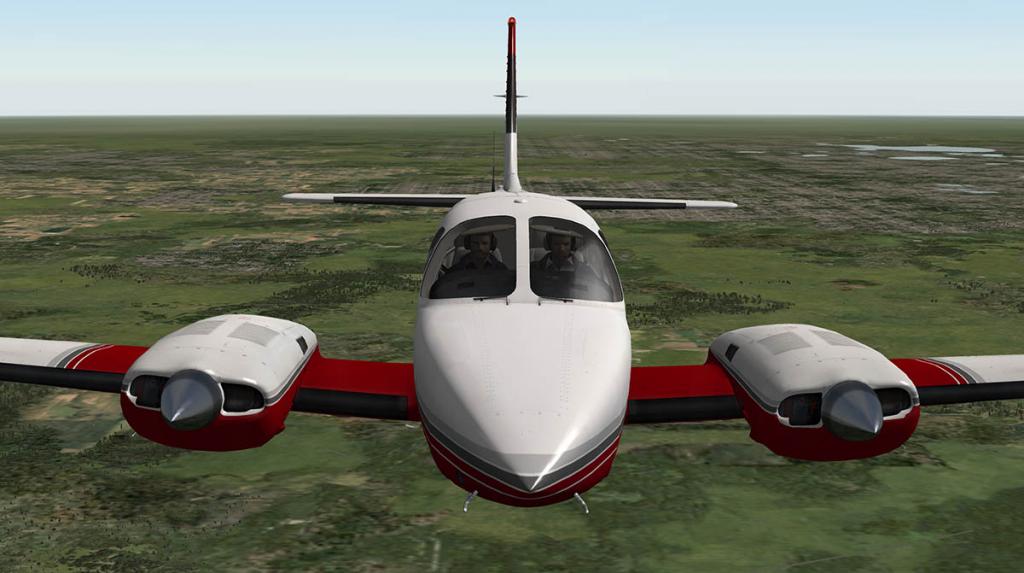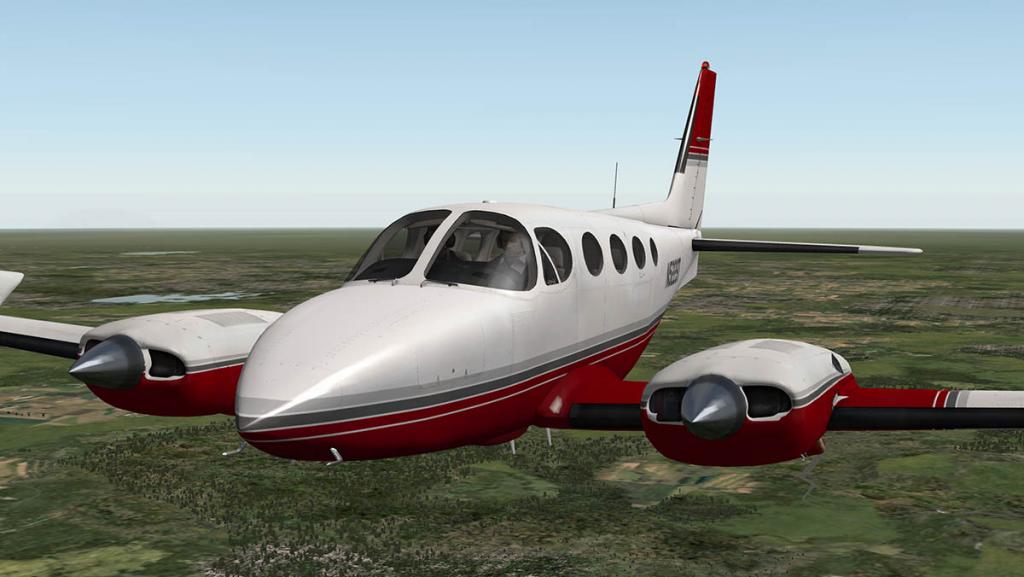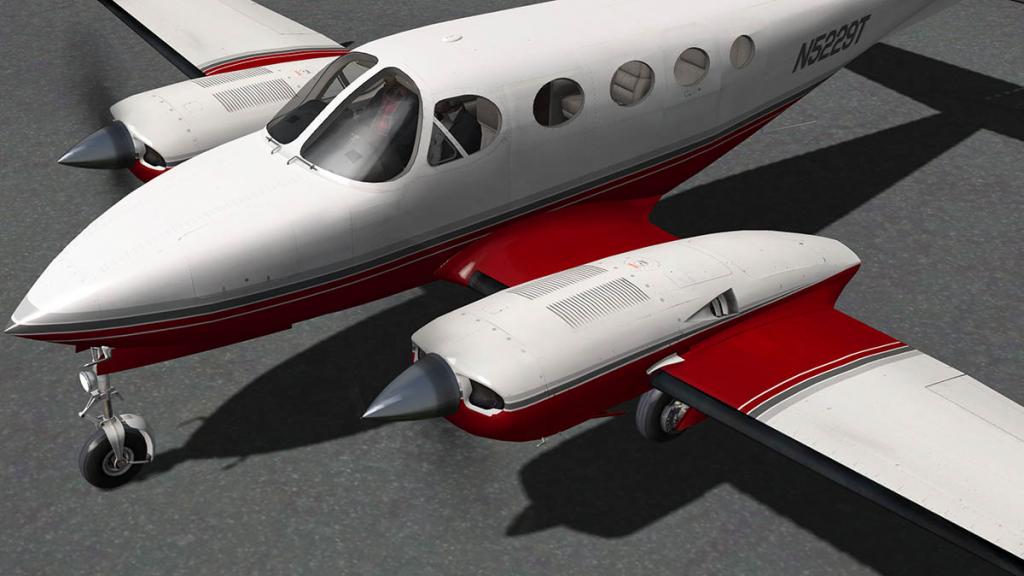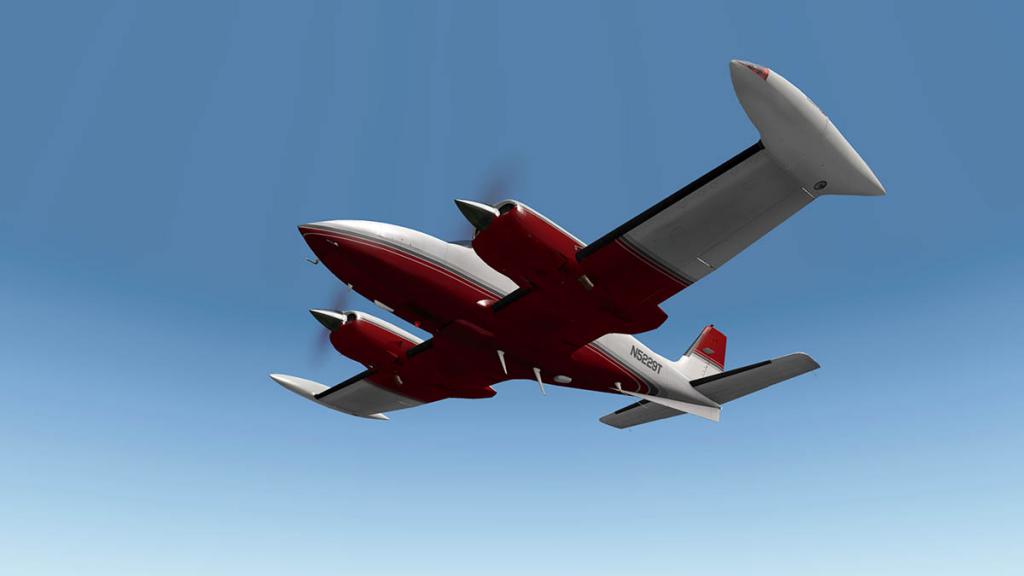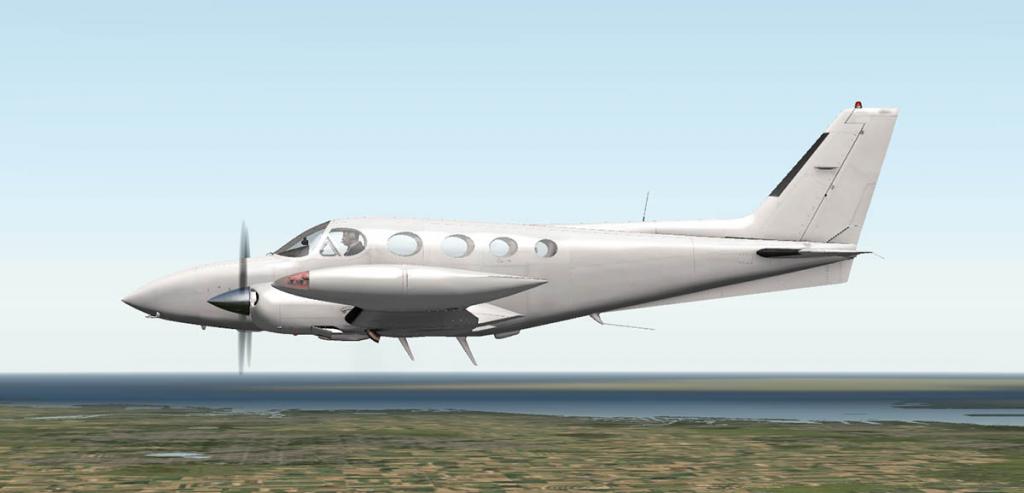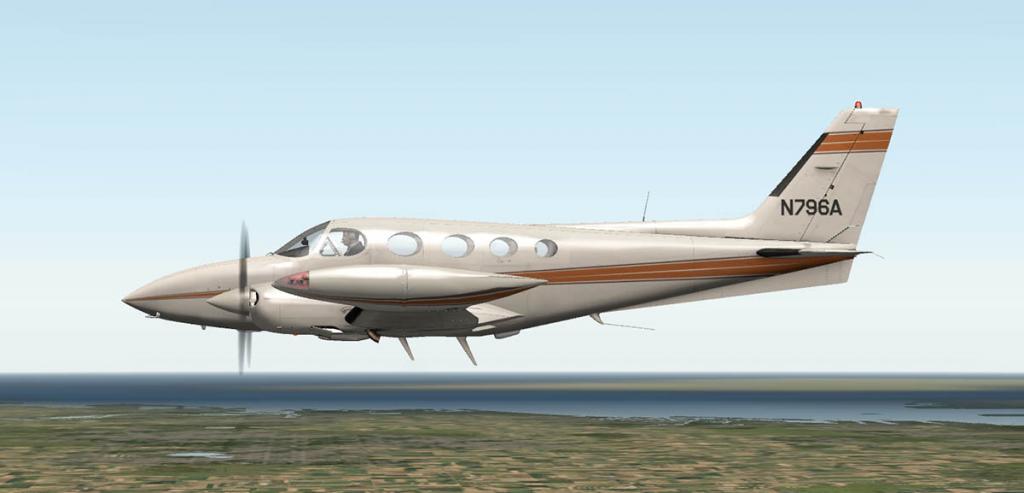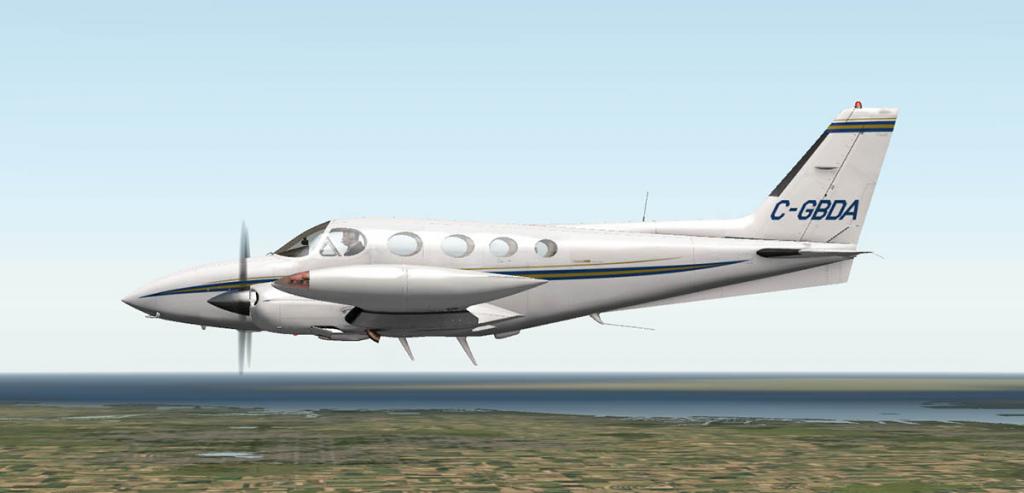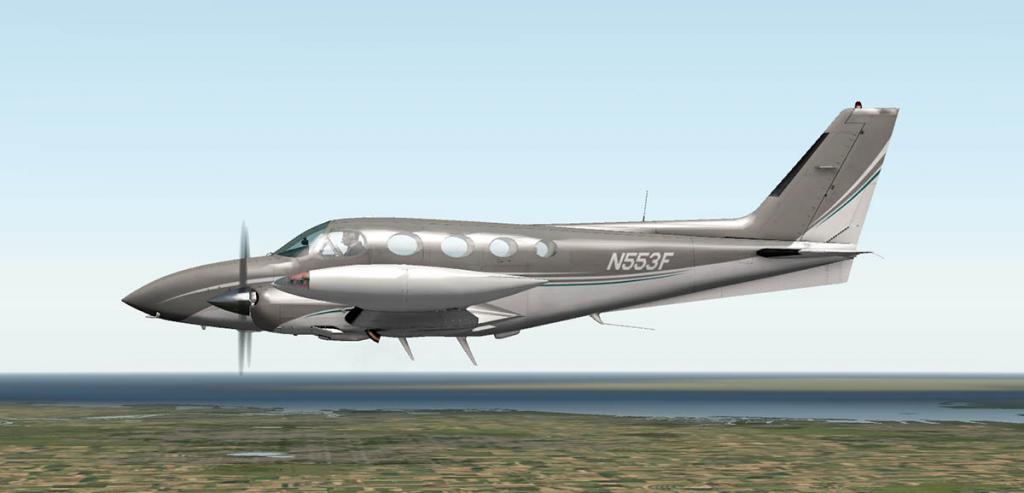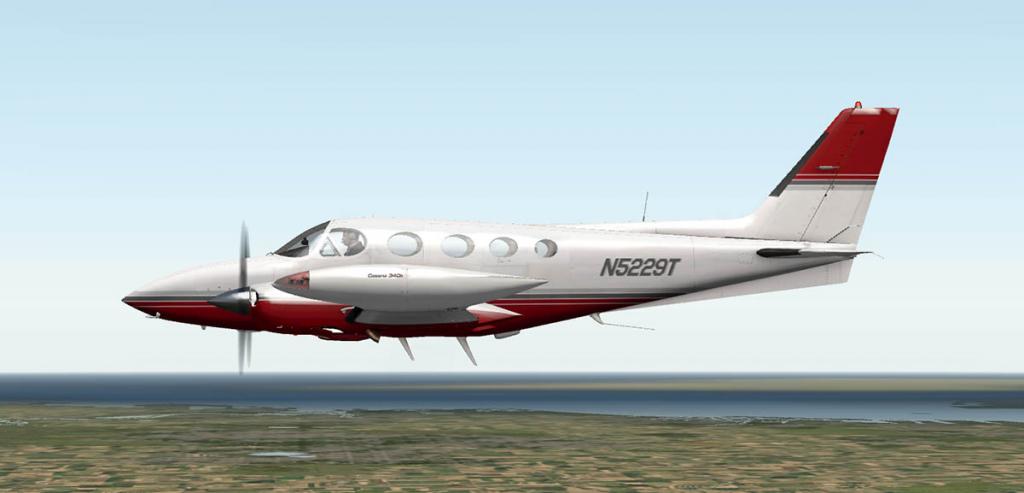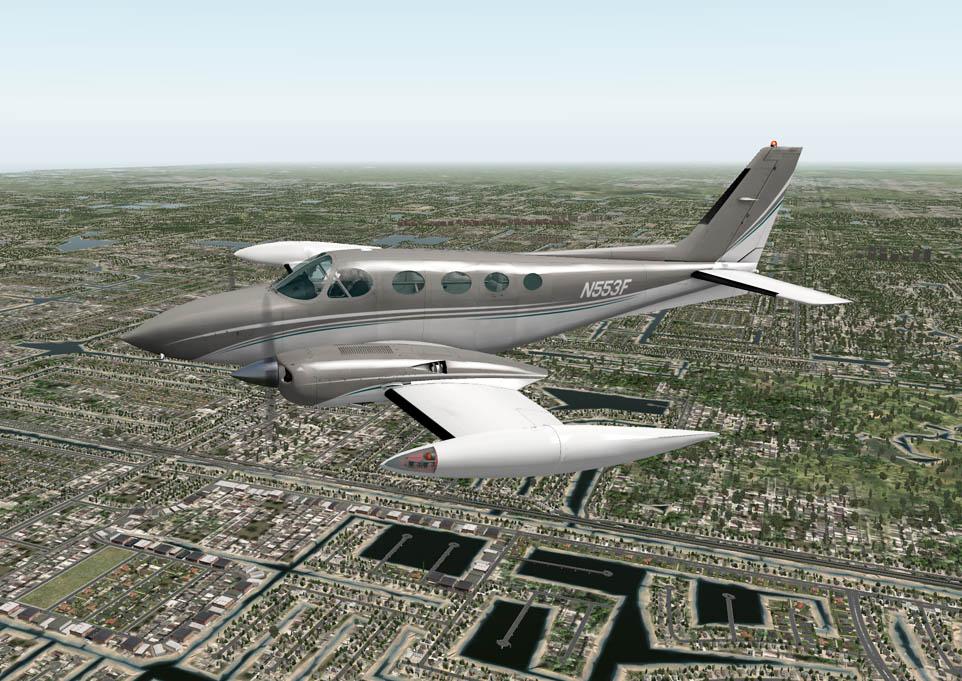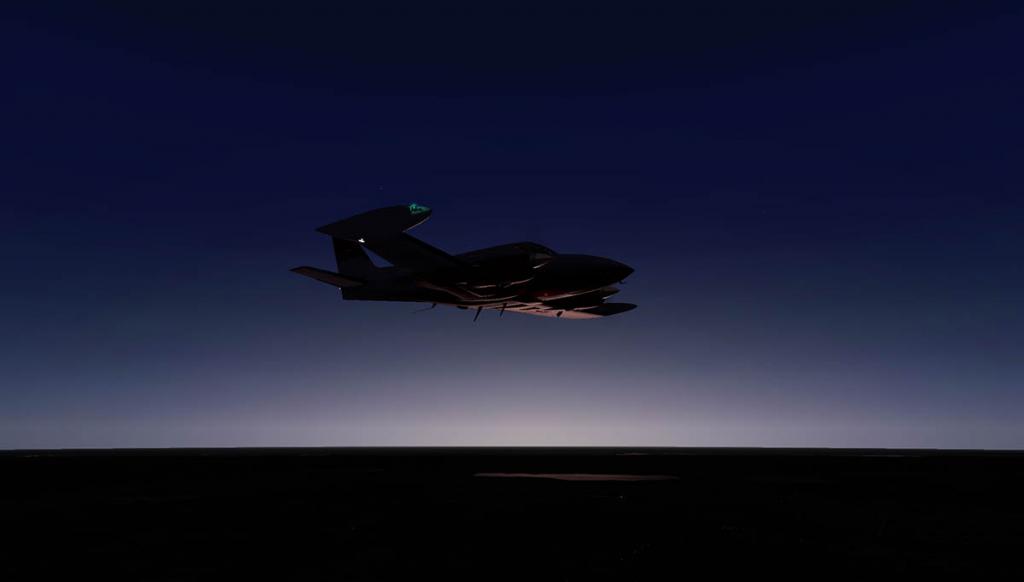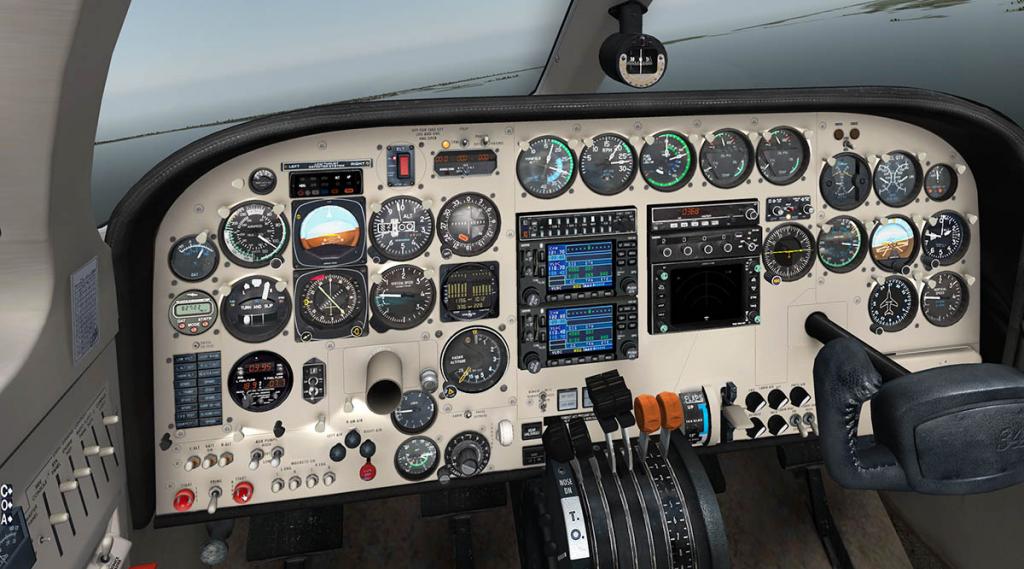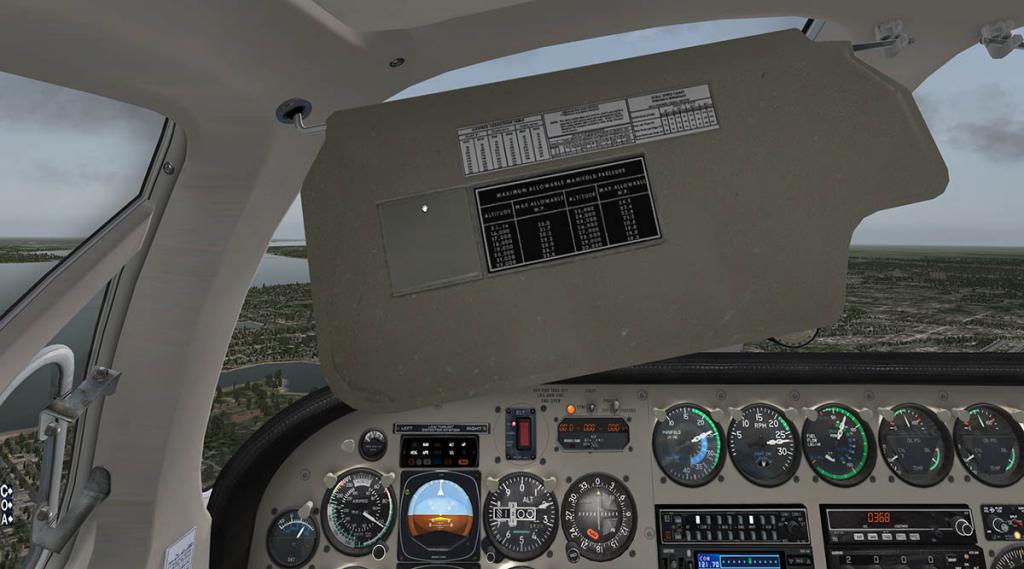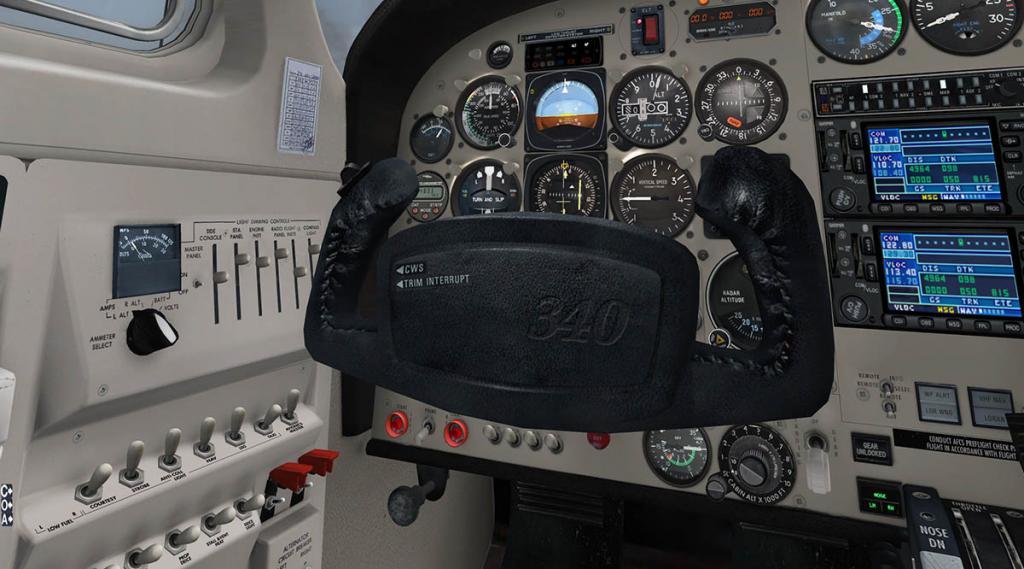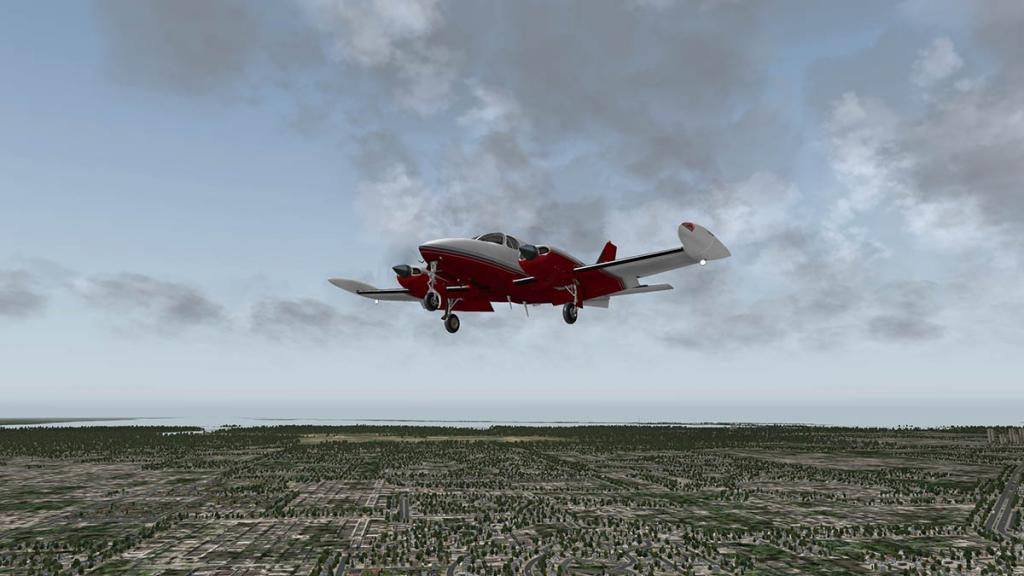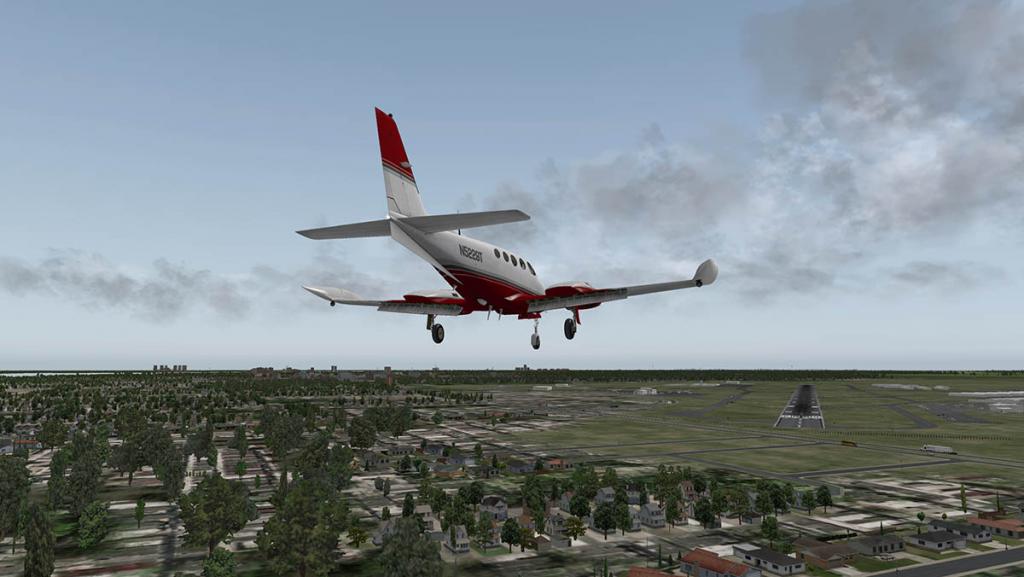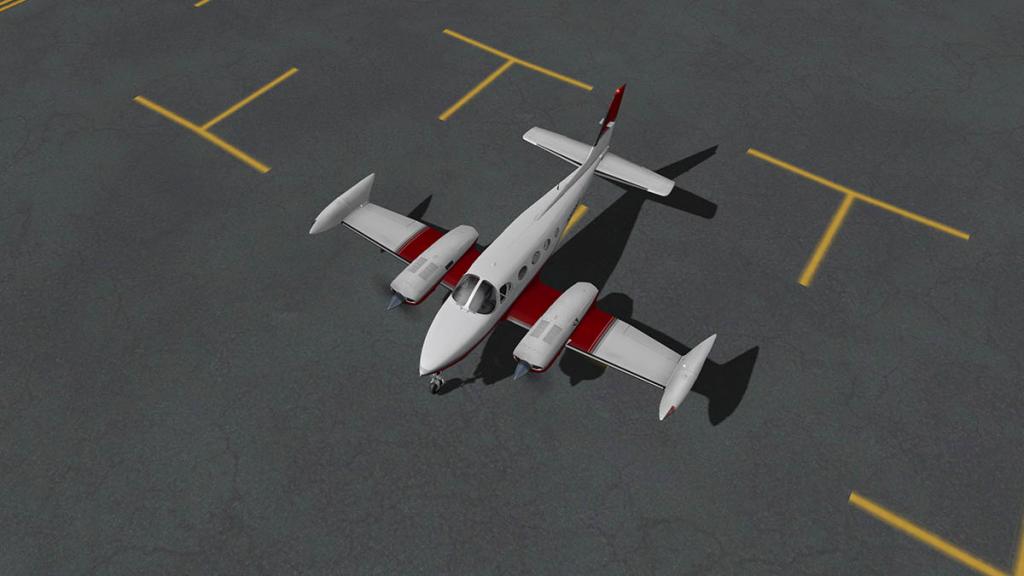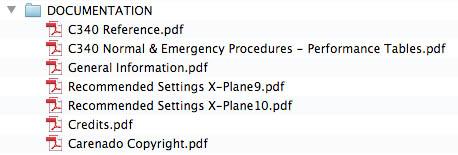-
Posts
2739 -
Joined
-
Last visited
-
Days Won
358
Content Type
Profiles
Forums
Articles
Everything posted by Stephen
-
Carenado has announced the update of the PA34 200T Seneca II to ver 2.0, including an update to the SASL plugin system to v2.0.1. This version is compatible with X-Plane 9.7, X-Plane 10.21 32-bit, and X-Plane 10.21 64-bit on Windows, Mac, and Linux platforms. Overhauled plugin-enhanced sound and lighting, enhanced user interface, X-Plane 10 optimizations, and many further improvements. (Full release notes are noted below). These packages run on either X-Plane 9.70 or X-Plane 10.22 so customers who bought them for X-Plane 9 could run them in X-Plane 10 without any problem. Existing customers can simply re-download the complete package from the online store they originally got it from to update to the latest version. The free update is highly recommended for all existing PA34 Seneca customers. PA34 200T SENECA II is available from the X-Plane .org Store for $27.95 - Carenado PA34 200T Seneca II Developer Site: Carenado Version v2.0 update notes: - 32-bit and 64-bit Mac, Windows, and Linux support. -Updated SASL to official v2.0.1 release, which contains optimizations that benefit from Laminar's X-Plane 10.22 release. -Fully re-programmed stereo 3D sound, with new dynamic effects and more efficient, cleaner sound. -Interior lighting optimized for X-Plane v9 and v10. -Overhauled lighting system. Lighting halos for nav and strobe lights are now more visible under certain viewing angles. -Landing light features tightly-focused "glare" effect when viewed from the right angle. -Nav lights have been improved for a more realistic appearance. -Improved ground handling -No longer has inverted fuel and oil systems. More realistic. -Optimized "options" menu, to use less memory. -Optimized "Cameras" menu to use less memory -Tweaked volume knob for engine sounds ("Sq" knob on Com radio) -Tweaked turning radius on ground to compensate for new v10 no-toe-brake-with-rudder setting. -Adjusted elevator trim characteristics -Adjusted trim time from centre to max for v10, as this setting, left un-addressed, will cause the same plane to take twice as long to trim. -Added wheel chocks and pitot cover for when engine is off and plane is on the ground. (Option available via "O" menu, and is only available under the mentioned conditions) -tweaked gauges, such as fuel and oil pressure, vacuum, etc. to conform to v10's new way of calculating "Nominal pressure/temperature" as opposed to "Max pressure/temperature". -Programmed default camera snap points for v10 (on top of existing ones via "Cameras" pop-up menu) -Provided 4k HD paint kit (in Liveries folder) (Suitable for v10 only). 2 Different .acf files: one for v9 and one for v10. -v10 .acf features optimized objects. Interior/exterior shading is applied only where needed, saving resources. -v10 .acf has further optimizations to objects that don't need the background (clouds, skies) to be drawn through them, if they're not transparent, saving further resources. -v10 .acf also protects certain textures from resolution degradation at low rendering settings. This guarantees that the panel instruments and text are always crisp and clear, no matter what rendering settings are chosen for the sim. -v10 .acf is optimized to make use of HDR rendering, especially in terms of lighting. This includes spill lights, which illuminate the surroundings, coming from Nav and Strobe lights. -When HDR mode is turned off, care has been taken to optimize the appearance of the plane without the enhancement benefits of HDR. 2nd August 2013
-
This is X-Plane Reviews! Since 2002 the X-Plane.Org and later the X-Plane.OrgStore has been the central part of the X-Plane simulator universe. And only this July 2013 the X-Plane.Org past the record number of users registered on the site of 250.000 users, a quarter of a million X-Plane users!... or Pilots. With such growth, and with the central focus of X-Plane being on these sites in information and sales, It was only worthy to have a site dedicated to reviewing and supplying you with the latest news of the ever expanding X-Plane universe. And so here is X-Plane Reviews, created by the same people that is the X-Plane.org, we will give you all the latest news and reviews with an insight into what is happening and what is worthy of your interest. No doubt the last year has seen many exciting releases and changes outside and within the simulator, these announcements and releases will become even more prominent as the simulator moves ever forward and from this moment you will have another home to bookmark to access the right information of these great product releases and in-depth XPlane analysis. Items that will be covered by X-Plane Review will range from: News Add-on... Announcements - Development - Releases - Reviews and Updates Developer... Interviews Scenery... Free and Payware - Development - Reviews - Updates Laminar Research... Developments - Betas - Updates Comments and Columns from myself and many other commentators and X-Plane users. In fact anything that is connected to the X-Plane Simulator. Many will know myself from my news and reviews over on the X-Sim Reviews site (as Flightime56) and here you can join me with your own views and comments on the way you use and expand your simulator world. If you have anything newsworthy then contact me at : [email protected] If you are new to the X-Plane Simulator then you are in for a treat. Many new users to simulation are surprised on how deep the platform is, like a game it has many, many levels of involvement... but don't call simulation a game. The aim is of course to replicate and fly just like you do in the real aviation world and X-Plane recreates a whole virtual world for you to do so. The world you fly in is in real time and with real distances that covers the whole area of the earth. So first off, X-Plane can be very time consuming if you want to go long distances. But that does not mean you can not just hop in an aircraft and do a quick flight around your own backyard. Besides the huge variety of aircraft available from both purchase (payware) stores (like the .OrgStore), there are also hundreds of machines available for free(ware) downloads at many other sites to add to your hangar. But X-Plane does not stop there, you can download sceneries, plugins, new aircraft liveries and a huge variety of items that can fill out your own unique collection that makes up your own virtual aviation world. (a sort of minecraft for aviation), and it is addictive!... In fact X-Plane should have a sticker on the box that says (This product is extremely addictive!).... And X-Plane wants for you to be involved. You can create your own aircraft, sceneries and other items to add to the collection folders of other users, They will use your work in their virtual world and enjoy your contribution to the X-Plane experience. So, thanks for joining us here at X-Plane Reviews to expand your X-Plane experience. Stephen Dutton
-

Elanport : ATR72 - 500 Liveries
Stephen posted a topic in Freeware Aircraft Reviews and Developments
Elanport : ATR72 - 500 Liveries Every friday my Email box dings! - with another great delivery from Elanport. His liveries usually come in a series and lately he has focused on the Aerosoft/McPhat ATR72-500 This week it is the Air New Zealand - "AIR NEW ZEALAND LINK" Does it get better than this?... I don’t think so. A craftmanship piece of beauty! Three other liveries for the ATR72-500 are also available for download - -- American Eagle -- HOP! - AirFrance -- Virgin Australia You have to join Elanport’s Email fan club to get all the updates - here: Eport Aviation Graphics Developer Site: http: eportaviation The ATR 72-500 is Available from the X-Plane .Org Shop for US$32.05 - Aerosoft ATR 72-500 (note: The Mcphat ATR72 -500 liveries can be large downloads) 1st August 2012 -
Scenery Review : KLAS - Glitter Gulch by Tom Curtis If planning a relaxing vacation then a city in the middle of the desert, satuated in extreme heat this would surely be the last place on your bucket list. But the title of Las Vegas is usually the first place on anyone's buccket list or any list for that matter in losing yourself to the world and all its problems. Las Vegas was created by mobsters to launder their ill gotten gains and to their surprise suddenly found out very quickly that Las Vegas would become their biggest cash cow of the century, if ever. History The first Las Vegas airport in this outpost area was the 1929 airfield (dirt runway, water well, and small operations shack) north of Las Vegas and was operated by the 1925 Western Air Express for Contract Air Mail (CAM) and was used by the Army Air Corps in the 1930s for training flights. This airport was named after Senator McCarren in McCarren Field, and this could cause some confusion in the fact that this is not the McCarren International (KLAS) of today, but it is in fact the current Nellis Airforce Base. KLAS was originally established by an American aviator called George Crockett, a descendant of frontiersman Davy Crockett, who established in Paradise another landing area called Alamo Airport in 1942 (which is a great name by the way) which became Clark County Public Airport, the title of McCarren Field from the old Las Vegas airport was then transferred in 1948. As Las Vegas opened up or the money rolled in a new terminal was opening on March 15, 1963, The terminal wasdesigned by Welton Becket and Associates and John Replogle who was inspired by the TWA terminal at JFK (Idelwild). Terminal 1 handles most flights and today consists of a total of 96 gates in four concourses: Concourse A (A3, A5, A7, A8, A10–A12, A14, A15, A17–A23). One wing of the Concourse A (Gates A17–A23) is closed because those gates are currently unused. Concourse B (gates B1–B2, B6, B9–B12, B14, B15, B17, B19–B25), Concourse C (gates C1–C4, C5, C7–C9, C11, C12, C14, C16, C19, C21–C25), and Concourse D (gates D1–D12, D14, D16–D26, D31–D43, D50–D59) and was finally completed in June 1998 . Terminal 2 was opened on December 18, 1991, as “The Chartier International Terminal” and was used for all international as well as most charter flights into Las Vegas. It contained eight gates (T2-1 through T2-8), four of which were equipped with facilities for international flights. However Terminal 2 closed on June 28, 2012, and has yet to be demolished. Terminal 3 was opened on June 27, 2012 at a cost of cost $2.4 billion, and is used for all international flights as well as some domestic airlines. The terminal contains 14 gates in Concourse E (E1–E12, E14–15), with the easternmost seven gates (gates E1–E7) being used for international flights. A people mover system connects Terminal 3 to Concourse D. Gates E1–E3 have two jetways to accommodate large aircraft. The top five routes are - 1) Los Angeles, California (1,075,000) - 2 ) Denver, Colorado (892,000) 3) San Francisco, California (872,000) 4) Phoenix, Arizona (730,000) 5) Atlanta, Georgia (722,000). Top International routes is - 1) WestJet (Canada) 2) Air Canada 3) Virgin Atlantic Airways (UK) 4) British Airways (UK) 5) Mexicana (no longer operating) 6) Aeromexico 7) Philippine Airlines 😎 Korean Air , Seoul-Incheon 9) Condor (Germany) 10) Sunwing Airlines (Canada). KLAS is a base for Allegiant Air, Southwest Airlines and lately (2012) Spirit Airlines. (US AIR will be pulling out soon with its American Airlines takeover) The airport has a very large fixed base operator precence, notable for Personal Jet use and tourism related activity, most notable is Signature Flight Support, owned by BBA Aviation Services Group, provides services for private aircraft using McCarran and the “The Las Vegas Executive Air Terminal”, owned by Eagle Aviation Resources. Glitter Gulch Scenery - Ver1.2 created by Tom Curtis (Scenery4XP) Download 40.40mb Installed 123.70mb For Version X-Plane10 Installation Installation is easy in just download the scenery and expand the folder to your “Custom Scenery Folder”. One item that is important, There is a read me to install or update the “CustomSBDatarefs004” in your plugins folder. This for the Flag effects to work correctly in the scenery. Introduction If you are a regular user of X-Plane then Tom Curtis and his sceneries will be of no stranger to you. His “Inside Passage” and companion pieces “Final Frontier” and “Canadian Rockies’ are classics of their genre. His follow up in KSFO (San Francisco) is also a major work worth purchasing for any collection. Tom was really the ideal person to take on McCarran International because the scenery requires something unique in that just creating a standard destination Airport. The problem is that unlike say LAX which is mostly surrounded with the normal high density and semi-urban cityscapes and could be easily be surrounded by the standard default X-Plane scenery engine, Las Vegas is well Las Vegas!. The buildings are all iconic in the extreme, and some are even beyond that (Like a fairytale Castle for example), so no developer is going to get away with just creating McCarran Inter in solitude, for one the airport is part and parcel of the city itself, If you want KLAS then the rest of Las Vegas is also going to have to be part and parcel of the package. And that is what we have here with “Glitter Gulch”. The scenery is really set out in three parts: 1) McCarran International Airport (IATA: LAS, ICAO: KLAS) 2) Las Vegas cityscape 3) Henderson Exeutive Airport (IATA: HSH, ICAO: KHND) Tom has noted that their will also be a follow up package consisting of: KVGT - North Las Vegas Airport KBVU - Boulder City Municipal Airport KLSV - Nellis AFB KINS - Creech AFB KTNX - Tonopah Test Airfield (Initial home of the F-117 Stealth Fighter) KXTA - Area 51 Groom Lake Test Facility That will go on and fill out the remaining surrounding areas around the Glitter Gulch scenery. First Impressions The first thing you note is not the scenery package itself but the area around Las Vegas. It is an amazing scenerio of flat basin, surrounding mountains and man-made lakes. Flying around this area or as an arrival is simply a joy to behold. In close proximity is also the Hoover Dam and the Grand Canyon which are excellent areas to explore either by Helicopter or a General Aviation aircraft. This them makes both KLAS and Henderson both very strategically important as a destination or departure point. This makes this scenery even more welcome to any collection because of its diversity and usability for any simulator user. Before getting directly to KLAS I want to note the default scenery. The area of Las Vegas is very visual and to get the very best from this package it is worth considering on how best it is to set it up in X-Plane10. The problem is that if you put the Glitter Gulch package directly in the standard X-Plane default settings you get a lot of empty green squares, of which doesn’t really work for the scenery (or any scenery for that matter). Pump up your render settings to cover “objects” of which you need to have set to at least “mega Tons” (for all those roads and traffic) but you will also need to push out your “World Distance Detail” as hard as you can as well. The problem with this area is that it is circular in the middle of the basin, so if it is broken into patches it shows up very badly here. There are two options that are helpful, The first is SimHeaven’s photo sceneries: SimHeaven Sceneries Simheaven has excellent Las Vegas coverage, but be warned as it is a big download for a slow connection at 2.6Gb, and then it all expands out to 4.28Gb. Over the city area the coverage is excellent, but ruins the mountains in the distance by making then bright and flat. The photo tiling also puts a hard line on the edge of the photo overlay at where it meets the default scenery. Most simulator users love these photo sceneries but I don’t like the large block patchwork look they create from the air. The option I used here is John Spahns “Urban Maxx Supreme” in that at least it keeps the photo areas under the actual city areas and so blends in very well with the default X-Plane10 world, It does however create a pattern from a distance, but up close it is very effective with the surrounding default autogen “plausable world” KLAS - McCarren International Both KLAS and Las Vegas are really one big scenery. Before adding in the texture special effects, you can see the scenery package in its basic form here.... McCarren is a large airport with four main runways: 1L/19R 8,985 2,739 Concrete (ILS 01L) 1R/19L 9,775 2,979 Concrete 7L/25R 14,510 4,423 Asphalt (ILS 25R) 7R/25L 10,526 3,208 Concrete (ILS 25L) The runway setup is interesting, with Two Main runways 7L/25R - 1R/19L with 7R/25L - 1L/19R as secondary (smaller) runways. The interesting part is that three converage all at one point (lower left) and when departing you can hold from both sides of the taxiways F and D with also taxiway E between the the two left runways. Approach is visually exciting, but you have to watch the mountainous areas surrounding the city with using Runways 25R/25L. Las Vegas!... the cityscape works well from the taxiways. Lineage is excellent if a little confusing at certain intersections as points converge, missing though is main to lead up lines up to each gate. Gates are well stocked, but there are no moving docking airbridges. KLAS looks very spread out but in reality it is only two terminals and terminal one is split into two very different sections of Concourses A, B, C and D which set futher apart. Terminal One - Concourse A Terminal One - Concourse B Concourse B is almost a mirrror image of A with round satellite gates Terminal One - Concourse C Terminal One - Concourse D Concourse C is a finger concourse with the control tower set behind. Concourse D is set in a cross shape of four finger concourses. Set behind Concourse D is Terminal 3 which is the International Terminal. Terminal 2 is the old “The Chartier International Terminal”, of which Tom has depicted as being partially dismantled. A Large fuel depot is to service the airport set out just behind the old buildings. Quality of the terminal buildings are excellent, and the expansive glass (alway a very hard one to get right) is also well created with clever detail is also first rate. There is quality in the brick work and steel work, but the important details are in there as well as air-conditioning units and systems abound. There are few items of animation as well with aircraft being towed over the ramp to certain gates. Although still modern in look the central terminal, designed by Welton Becket and Associates and John Replogle, was inspired by the TWA terminal at JFK and it is well represented here. The new KLAS (FAA) control tower is part of the package. and the modeling is first rate. It is easy to get confused between the ramp towers and the new version, but Tom has done a great job here. The Cargo area is also well produced with not just recieving buildings on the ramps but also warehouses behind. From the air the car parks look great, but they are flat on the ground which look slightly odd if you (like me) like to fuss over the aircraft before or after a flight. Western Boundary The western boundary is the main area that cover the fixed base operators and private jets. And they are all very well represented here. They are split into many areas, but the main are the Atlantic Terminal (Above right) Signature Executive Terminal (below Left)... Which is a really well laid out aircraft park. The JANET terminal (Above Right) "Which is all so very hush, hush and Military" Quail Aviation is very well represented, with many buidings and hangers.Gulfstream and the excellent Sands hangar. To note only a few as there is quite a few other hangars and ramps dedicated to helicopter tours and sightseeing and personal jet parking. Las Vegas The important backdrop of the Las Vegas skyline is very well represented, all your favorite hangouts are here and are all well recreated. I found that to get the maximum benefit I needed to have my “texture” render settings set to “very high” to bring out the excellent texture detail, with already pushing the framerate on the “objects” and “distance” This scenery will push a low powered computer to the limit. I found it still very usable for such a very large scenery and in context you will admit the package is very good, but this also in trying to get the maximum out of the whole package... and that has to come at a small cost somewhere. The “City of Sin” does look very good and you can pick out all the landmarks (The Convention Centre is behind the airport). Great signage certainly enhances the detail, but isn’t Houdini a bit.... well Dead!... But then again so is Elvis. The OSM (Open Street Map) networks in X-Plane10 are excellent and really make the city busy and flowing. Night Lighting Las Vegas is really a night bound destination and so the town only really comes totally alive after dark, and in this “Glitter Gulch” package it comes really alive here as well. The Strip buildings pop off the screen in bright colours as the city glows bright in the desert, It will certainly be interesting when Laminar Research update their nighting in the default autogen and introduce some medium buildings to compliment the iconic skyline set out here - I think then it will be a very good if not a great skyline, the laser out of the Luxor Hotel is good at night, but just a line in the sky in daytime... I’m not sure on that one? McCarren International is however sensational in the dark.... The HDR lighting is excellent, and when you get close up to the terminals the graphics and the texures are simply first rate. You can work around the ramps with ease in the dark, If you are coming to Las Vegas, then the Dusk, Night or early Dawn periods are certainly the best times to come. Henderson Exceutive Airport Henderson Executive Airport is a public airport located 11 nautical miles (20 km; 13 mi) south of the central business district of Las Vegas. It was originally known as Sky Harbor Airport, but was renamed in 1996 when it was purchased by Clark County to be used as a reliever airport for McCarran International Airport. Today it is primary a General Aviation and Private Jet (Executive) facility and storage. Henderson has two Runways: 17R/35L 6,501ft 1,982m Asphalt 17L/35R 5,001ft 1,524m Asphalt Part of the “Glitter Gulch” package is “Henderson Executive Airport”. If Henderson was a separate item than KLAS and Las Vegas then it would worth the purchase alone, It is an excellent scenery and more detail is allowed here because of its smaller footprint than the vast spread of KLAS. All buildings are as good a quality as anything that Tom Curtis has delivered in the past. Highlights are the central terminal buildings and offices. The buildings are very well constructed with great detail, carparks and cars are well executed and the scenery is just very well complete in every aspect. The only slight difference is the day glass is a bit flat and not dimensional like at KLAS. The Maverick Hangar and Control Tower are more highlights up at the Southern end of the airport, the flying American flag should work if you inserted correctly the new dataref plugin earlier. You will find the airport a large storage facility in most cases but the set out is excellent with a wide variety of hangars and aircraft shades. All the ramps are full of aircraft and helicopters to add to the visual appeal. Refueling areas are excellent (above) and to the North of the main ramp are more larger hangars (expensive?), offices and aircraft storage - and all air-conditioned for your comfort. Building construction and design is first rate and so is the smaller detailing. Fences, signage cars and nice tropical palm trees all to help fill in the desert location. Henderson Nightlighting The quality of the HDR night lighting is as good as KLAS, There full lighting on all over the ramps and in all areas it is well lit in abundance. The lighting detail here is excellent and very realistic, like KLAS, Henderson works very well in dark. Henderson Executive is top class scenery and a great addition to the package, if the other to coming add-ons are as good as this airport then this whole area is going to be very well represented. A note on departing using Henderson 17R and 17L, make sure you have a good high angle of departure. The ground rises up quite quickly from the end of the runway, it is quite a deceiving view from the cockpit as it doesn’t look as steep as it really is, a lazy departure will find you scraping the expensive underbelly of your precious GA along the ground or doing a wheels up landing on the rocks! Summary Any scenery from Tom Curtis is great value, and “KLAS - Glitter Gulch” is no exception. You have to understand that these big projects are not for the faint hearted, and for a single developer like Tom it is a major achievement to cover all the aspects delivered here. Because it is so widespread in its scope there will be small areas that are not covered, KLAS is a huge airport and alone and is a big project to cover, but Tom has been able to do an excellent job in doing so. As mentioned at the start of this review is that the city skyline of the iconic Las Vegas is as important as the airports themselves as here one cannot really exist without the other. The only real minor point with KLAS is that using photo underlays can create blank areas that look great from the air but look odd on the ground, These underlays can and do create slightly unattractive visuals like in this case the over bright green golf course. And because of the huge size of the airport you can’t cover all these areas with small details. In most cases Tom has certainly done great detail in the small stuff, but the flat carparks and other small airport infrastructure of small buildings and the really fine detail is missing. However it is to be noted in that where it counts like in the excellent western boundary fixed base area it is very well covered. The other consideration is to make the scenery really work is that you have to work your render settings to their X-Plane10 limits, you need the textures on “very high” at least and objects on “Too Much” to get the Las Vegas excitement working - and having the “distance” detail at the highest settings is needed to create the sprawl of the city. Anyone one with the headroom to do this is going to really get the most benefit from “KLAS - Glitter Gulch”. I am not saying it is framerate killer, because the actual scenery is excellent considering its breadth and scale. Tom Curtis is a really good quality 3d designer, his work is always first rate and he doesn’t disappoint here, KLAS is excellent in the the quality of the airport and its terminals, great detail and perfect renditions of the infrastructure, airport layouts of runways and lineage is also very good and detailed. Without doubt the nightlighting and night textures are highlights. The Las Vegas cityscape also delivers as every major icon is covered, it is a consideration on far you can go with hotels and motels or the “Chapel of Love” before you start wasting work time on excess, but a few more basic buildings (hotels) would really finish off the area to its perfection. The whole “KLAS - Glitter Gulch” package is already great value, and with the addition of Henderson Exec, it then becomes exceptional value. This airport is excellent in the GA/PersonalJet category and make a ideal base for exploring the area. This scenery will certainly fill in a big area in the X-Plane envionment, and it has to be part of your collection. It is great value as well and with that “KLAS - Gutter Gulch” does tick all the right boxes. ___________________________ Price US$24.95 and “KLAS - Glitter Gulch” is now available at the .orgStore : KLAS - Glitter Gulch Developer site: Scenery4XP Review By Stephen Dutton Copyright©2013:NewBluePublications Published 31st July 2013 Review System Specifications: Computer System: - 2.66 Ghz Intel Core i5 iMac 27” - 6 Gb 1067 Mhz DDR3 - ATI Radeon HD 4850 512mb Software: - Mac OS MountainLion 10.8.2 - X-Plane 10 Global ver 10.22 (final) - ExtremeSceneryMAXX Addons - Saitek x52 Pro system Joystick and Throttle
- 6 replies
-
- glitter gulch
- x-plane scenery
-
(and 1 more)
Tagged with:
-
Roman Berezin is one part with Phillipp Munzel that make up Flightfactor, the Designer house that has developed for X-Plane the Boeing 777 Worldliner series and the soon to be released Boeing 757 series. Roman joins us today to give X-Plane Reviews some insights into Flightfactor and his life in X-Plane. Hi Roman... XPR: First off I will note that congratulations are in order as you have just become a doctorate (Dr) of Mathematics. What is your story behind that and how that affects your future and ambitions? Yes, a long and tedious period is over. Don’t get me wrong, I enjoyed being in the university but 10 years are quite enough. For a few years I was teaching but decided I don’t want to continue with a post doc or teaching. So, I am now a Doctor of Mathematics, specializing in probability, I published two papers but will not be making that my career. XPR: It would have needed a lot of focus to do the doctorate and decide to build the Boeing projects in the B777, B757 and all at the same time? Yes, the last year was quite hectic with finishing the PhD and doing the 777 but it the end it all worked out. XPR: Was the B777 considered the number one project from the start or was it put to the front of the pack for other reasons than the big gap in the marketplace for the aircraft? Actually Nicolas has been bugging me to do the 777 for a long time, ever since the SSJ v5. But I wasn’t sure I could pull it off, finally when I decided to do it I met Philipp, we just clicked and that made the perfect team for the 777 and many future projects, we hope. XPR: The B777 has without doubt been one of the big releases for X-Plane in the last twelve months, how do you see the release now almost twelve months on and how it has evolved? Well, trying to be as modest as I can, I think we did a very good job on the model and now its almost perfect. There are a couple more things which I would like to add to the model, but I think it is generally very good now in terms of modeling, the flight model and the systems. Of course, the model will continue to evolve – we will try to keep it at the very best edge of Xp add-on technology. XPR: I found the just released 1.5.1.1 version of the Boeing 777 and what I would now call the aircraft now "mature", certainly the aircraft will still be developed but has it reached that mature stage from your point of view? Yes, as I said, I think that the plane is mature now and can certainly rival the best of them, not only for XP too. XPR: Although most developers have solid business plans, yours was a very interesting one in asking payment for liveries and other versions in the Cargo and -300 variants, I actually like the foundation of the idea as it gave payment to other people who contributed to the project and allows them and the team to share in the business... Do you see this sort business model being adopted more in the future? I think that out model is very good for several reasons. As for the different version of the models, its quite common in other sims and even in XP to have a small and an extended version. For the 757 we will actually have 6 planes available, 757-200/300/F and all with both RR and PW engine types. Of course we won’t ask the customer to pay for each but we will probably in the end have 2 or even 3 variants for the plane. As for the liveries its very simple really. For another models the producers are able to make 5-10 liveries. Here we wanted to give the customer the ability to get up to 100 liveries. Of course, for this we had to get 3rd party help. The price for the liveries is really symbolic of 1$ per livery. For the 757 we already have more than 100 liveries ready which will be sold for 1$ as with the 777. Also, the 757 livery packs are made for both 200 and 300 models. Our goal now is to bring the models as close to reality as possible. For that we get helped by several real life pilots, engineers and have a license from Boeing. XPR: The B757 is due soon as the next release, You then put off the release so you can work more on the different engine variants and so how is that going? Well, the original release date was in June, but we have decided to postpone because we could get the engines to work exactly like in reality. The 57s engines are EPR controlled, which, as far as I know, has never been truly realized in XP before. So we set ourselves to really simulate the internal workings of the engine and thus the delay. XPR: You have added a few special effects to this aircraft, haven't you? Yes, some effects which have already been tested on the 777 and the SSJ have now been significantly improved. Real reflections which employ several techniques at the same time, a sophisticated 3D sounds system is there as well as different lighting effects using the improved v10 lighting. Also, the rain simulation has been improved. The newest addition of course is the particle system. As you may already know, the 757 will have more than 250 custom failures, and now many of them are accompanied by special effects, like wheel well fires, APU overheat with smoke, brake overheat, and others. We also use the new particle system for moister effects in the engine nacelles and wing trails. XPR: How much more complex can we go in aircraft systems, and is it a moving point in the fact that is it worth spending a lot of programming time to simulate a minor function for the return? or is it best to enhance the programming we have now? Well, this is really a question of what we want to have in the end. I guess if the general goal is to have a training sim of the level which can be used by real pilots, then we have to keep on and improve the systems to the point of real simulators. On the other hand, many users prefer a simpler sim, here we can improve on the quality of 3D, graphics and effects. So there is quite a long way to go in either way. XPR: The main central feature in all of Flightfactor's aircraft is Philipp's FMS systems, It is a work of art, how did you both get together and produce this. Generally Philipp’s FMS system combined with the ever improving visual effects make up the unique quality of our products. As for me and Philipp, we “met” when I was working on the 777 and decided to cooperate on that project. As it turned out, we are very good together in terms of timing and common mind. Thus, we have quite a lot of plans for XP and hope that Flightfactors becomes the major player in XP add-on market. XPR: Can Philipp ski as good as you? Actually both me and Philipp ski quite well. The fact that I fell down on the last day of our skiing trip is accidental. The best skier of all is of course Nicolas, who fell down and hurt himself quite badly on the first day of the trip. XPR: Is putting the right team together as important as other goals in projects like these? Apparently so. Now when we have more than one project at the same time, finding the right people is important. Our core team is me and Philipp, but we have almost 10 people helping us on and off, with the flight model dynamics, liveries, graphics etc. XPR: Ultimately though the heavy workload to deliver a great product still falls down to you? In the end, it’s the team effort that gets the job done. Flightfactor doesn’t have CEOs or CTOs, we are all working together for a common goal, I merely act as a coordinator to help bring the projects together. XPR: What was the attraction to X-Plane as a simulator? Actually, as most, I started as a user flying on line in IVAO Ukrainian division and started getting interested in making models in 2009 after watching the first Dan Klaue’s tutorials. I think I never used any other sim, maybe MSFS in 1995. XPR: How do you feel of the current situation of the X-Plane10 simulator?... and for its future? I think that the sim is progressing nicely, finally v10 has become fully usable and its benefits over XP9 are pronounced. Of course I have some wishes for the path XP should take, but I will not mention this, as the designers will probably not listen to me anyway. XPR: How important do you think is the X-Plane community in part of developing your products and feedback? Oh very much. I always prefer to ask the community what they want before starting a new project as well as monitoring feedback to see what we have done wrong and what should be improved. This is the big benefit of a small community, the ability to actually talk to users. As you know, my skype is available online and people are welcome to share their thoughts directly. XPR: How do you feel in comparison of X-Plane Add-Ons are now in relative to say PMDG and other large development houses in the FSX/P3D market and is that a market to plan for in the future? (would you market in the FSX platform) I don’t want to compare ourselves to anyone, let users do that. I don’t think we will develop for FSX, but the thought of doing things for airlines is appealing. XPR: 64Bit was a big change to the X-Plane platform, and it affected Add-On developers like yourself more than in any other area, how did it overall affect your plans and releases? We did spend many hours cursing XP while the move to 64bit was made, but generally the schedule of XP releases was available and people like Ben Supnik were very helpful, so our planes didn’t change much. XPR: From a developers point of view is there anything that you would like from X-Plane that you feel would be either a step forward or greatly enhance your products? Oh yes, and Laminar is aware of my wishes J XPR: You use the .OrgStore to distribute and promote your products, why do you use the .orgstore and what are the benefits to developers in doing so? We did and indeed still use some other stores for product distribution, but generally I like the communal feel of the X-Plane .org and it is the biggest place for XP out there. Of course Nicolas is much fun skiing with. Next year we try skydiving, see what he does there. (laughs) XPR: Thank You Roman, and good luck with the latest release. Developer Website: Flightfactor/Facebook Interview 26th July 2013
-
- Roman Berezin
- Flightfactor
-
(and 1 more)
Tagged with:
-
Peter Hager has released 3 new A380 Series versions besides his “British Airways” G-ALEA aircraft in July 2013. Unlike the usual situation where as you purchase an aircraft type and then you have a selection of liveries to chose from, Peter’s aircraft are a single model or version of a certain aircraft. The version is correct to type, rating and engines of that registration. Here are the four new versions: First is G-ALEA, which was the first of 12 aircraft to be delivered to British Airways on 4th July 2013. (LEA is under going route trials now between London Heathrow and Frankfurt). This livery is exceptionally good with fine detail and very good LIT (night textures) Second is A380-841 version 9M-MNE of Malaysian Airlines and it is equipped with 4 Rolls Royce Trent 970B-84 engines. Third is a Thai Airlines A380-841 version HS-TUB and it is equipped with 4 Rolls Royce Trent 970B-84 engines. Fourth is a China Southern A380-841 version B-6138 is equipped with 4 Rolls Royce Trent 970B-84 engines. This is the first aircraft to be operated by a Chinese Airline. All these new versions come with a few updates to the A380 series, gone are those bland orange cockpit windows of which have now been replaced by a 3d clear view and now with two pilots of which are very realistic - Now flying late at night the glow from the 3d panels is very realistic. This change should be soon updated through out the rest of the A380 series as well. For X-Plane9 users there has been a Plugin update to configure the aircraft for the 9.70 version of X-Plane and a change over plugin folder is included with these versions. The issue seems to be the VC cockpit, so if you haven’t recieved the update from Peter then download the plugin here: http://petersaircraft.com The new additions are now Available. (all versions now come with the magnificent VC Cockpit installed (above) Airbus A380-841: British Airways - US$ 59.95 Airbus A380-841: Malaysian Airlines - US$ 59.95 Airbus A380-841: Thai Airlines - US$ 59.95 Airbus A380-841: China Southern - US$ 59.95 Or you can purchase the full A380 series (Collection Package): Airbus A380-861 House Color - First test aircraft - Bonus Plane Airbus A380-841 House Color (demonstration aircraft) - Bonus Plane Airbus A380-861 Air France (Alliance GP7200 engines) Airbus A380-961 Emirates (Alliance GP7200 engines) Airbus A380-961 Korean Air (Alliance GP7200 engines) Airbus A380-841 British Airways (Rolls Royce Trent 970B-84 engines) Airbus A380-861 Lufthansa (Rolls Royce Trent 970B-84 engines) Airbus A380-841 Malaysian Airlines (Rolls Royce Trent 970B-84 engines) Airbus A380-842 Qantas (Rolls Royce Trent 972B-84 engines) Airbus A380-841 China Southern (Rolls Royce Trent 970B-84 engines) Airbus A380-841 Singapore Airlines (Rolls Royce Trent 970B-84 engines) Airbus A380-841 Thai Airlines (Rolls Royce Trent 970B-84 engines) - US$ 69.95 (includes future all updates) both single purchases and the collection package are now available from the .Org Store: Peter's Aircraft A380 Series Developer Site: Peter's Aircraft X-Plane Reviews: 2nd August 2013
-
Carenado has released another big twin engined aircraft for X-Plane in the form of the Cessna C340 II HD Series. It is a size larger than the other twins from Carenado in the form of the B58 Baron and the PA 34 Seneca II and at a distance or a glance could be easily mistaken for the X-Plane default GA Beechcraft King Air C90B (The same livery does not help in the confusion) - Come in closer and it is in no doubt a Cessna. Carenado has the special ability to somehow make every one of their releases unique, every aircraft has a slightly different feel and layout that signifies the real aircraft, That is the aim of simulation of course, but how hard is that to reproduce on a computer screen, It is with only skill and the pure detail that Carenado can produce such reproductions that are almost micro versions of the real aircraft. History The C340 II is a larger-class size of the Cessna 310, seating is revised from 4 seats to 6 seats, and the wings were adapted from the C414, the aircraft was pressurized (The unpressureized version is the C335) and it was powered by two Continental TSIO-520-NB engines of 310hp (233 kW) each. Production on the 340 began in 1969 and the first aircraft was delivered in 1971, a crash during flight testing was a small setback to the program. Production was from 1971 to 1984 with 1351 deliveries. The original version was the C340A, The C340 II and the C340 III are only different in the types of avionics suites fitted in each aircraft. Carenado C340 II HD Series (Download and Installation) Download 260mb Installed 315mb Installation is very simple in that you download and unzip the file and then deposit the file in your General Aviation folder. There are two platform versions included for both X-Plane10 (With HDR lighting) and X-Plane9. The C340 is part of the HD Series that has the higher resolution textures (2048 x 2048), but are also refined to give the best performance even on lower performance computers, thoughout the textures are extremely clear and of very high quality. First Impressions and Outside Details The C340 is a very clean skin design, mainly because there is only one door on the left rear, the aircraft is dominated by those large wingtip fuel tanks, they are not just extra supplementary tanks but the main fuel tanks for the aircraft. Detailing is extraordinary good, all the landing gear (NLG) and (MLG) is perfectly realized, with a shin guard on the nose-wheel. Wear and tear is minimal but with weathering is so good it is hard to fault. The airframe is has all the required various vents, fins, pitot-tubes and aerials all over the aircraft, the aerials are rubbery excellent and move with any wind force. The De-Icing tubes are also well noticeable in the front of the main cockpit windows. Glass is well represented, you can in the options select if you want the reflective (dark green) or the clear clean window view, the winglighting (Nav, Strobe) is in-cased in a glass shell that shows the care and detail that goes into these aircraft. Carenado provides three types of popout Menus, that are located on the lower left of the screen. C - Camera: Is the standard set of Carenado views including a point of view slider. O - Options: which includes, Window reflections, Static Elements, Passenger Door (open and close), Left and Right Wing Baggage lockers (Storage), Left and Right Nose Baggage lockers (Storage). A - Autopilot: The Autopilot controls popout for ease of use, useable inside the cabin and external. All the Options are highly usable, and quite clever in detail, however I don’t know if I would want my Gucci Suitcases so close to those hot engines? Interior and Instrument panels The interior is first class and the aircraft has had the all leather interior option selected. There is a crafted wood pull-out animated table on the right side of the cabin, that compliments the four rear club seating arrangement, there are two packages sighted behind the rear seats as well. Every item is weathered and worn, the front seats need a really good clean, and are showing their age, the carpet is simply beautifully filthy and dirty ( I mean in real life would you buy an aircraft this dirty?) But for simulation it is simply the best of the best in detail The main panel is the best workplace available and fully functional in detail. Power off you can see the layout. Power on and dials and screens show depth and their 3d design, the weather map has a rainbow function to to note the instrument is on. Left and right flying controls and instrumentation. All standard six instruments are as detailed as the original items, and a warning and item activation panel is noteworthy on the lower left. Twin engine starter buttons and fuel primer is excellent (no fuel prime then no start!), but I couldn’t find the aircraft key? There is a radar height dial and a twin engine digital readout that is very accurate. There is a ELT (Distress radio beacon) that is very nice to turn on but does not really do anything but flash a red light (the same beacon is the one that recently went on fire in the Ethiopian Dreamliner at Heathrow?). You have a fully set of engine dials; Manifold, RPM, Fuel Flow that are duel engine instruments, if the needles are together then the engines are synced with each other (you can sync the propellers as well) Oil PSI is noted with each engine. The Equipment stack is quite average, with a Bendix KMA 24 radio, two x Garmin GNS430’s (Comm1,Nav1) - (Comm2, Nav2), King KR 87 ADF and Garmin GTX320 transponder. With no doors to open the side panels are very functional, on the pilots side there is a full set of two rows of switches, one (lower set of six switches) for De-Icing, Pitot heating, Stall & Vent Heat, and two main power (red covered) swiches. The upper set (seven switches) are lighting for external Strobe, Anti-Coll, Nav, Landing, Taxi and the main Avionics master switch, a single courtesy light switch is on there as well. Above is a full set of light dimming and adjustment sliders, no fudging under the panel here to set up the perfect lighting, these controls are excellent for day and night adjustments. Bose audio headset panels on each side is also great detail, and so is the working Ammeter voltage selector. On the right panel is the Air-conditioner adjustment, Oxygen supply and hour meter. The central throttle pedestal is like it was removed from a real aircraft and bolted straight in here, there three sets of duel levers for each engine. Each lever can be individually controlled or you can use the pairs in tandem. Left set is for duel throttles, center set is for engine RPM, and the right set are for mixture. Set down low is the autopilot controls that are thankfully on the popup menu. Fuel tank switches and guages are sited between the front seats... Nightlight Night lighting on the panel (with such large adjustments available) are excellent, the dials glow perfectly and have simply amazing depth of detail, unusually you don’t need the lighting on in the daytime in the C340 of which I usually do have in other Carenado aircraft, mostly this is to take away the flatness and give the panels more colour and depth. But at night in the cabin the quality is just so well realised. Above you is a blue night light and the rear cabin has (switchable) spotlights over each of the club seats, Using the X-Plane10 version you will need the HDR on to get this affect. Night or day because of the small sized sidewindows and only one door. It feels cozy in the pilots seat, tight or even cramped would be another point of reference for an aircraft of this size. Taxi, Takeoff and Cruise Prime the pumps and flick start the engines, the sounds are 3D and have been recorded from a real A340. move your position around the aircraft and they will tune to the angle, inside the aircraft the volume feels about right and realistic. Taxiing is tricky, because you have so much power, you give the aircraft a little throttle to get it moving and then pull the thottle back to zero and you are still powering along, braking is constant to keep the speed down and adjusting the mixure or RPM levers doesn’t seem to stop the speed either, pull the levers too far back and both engines will crank to a stop... Usually I can find a sweet spot, and it maybe it is there with a little tuning. I always like to get a good taxi speed, it is for me a big part of the overall experience, and I have been known to trundle for 30min or so to get to the right runway or gate, The Caravan 208B is like this as well but I found that sweet spot to stop that constant escalating runaway speed. The flap arrangement is very different here, the flaps are a duel purpose arrangement in that they do the both jobs of of being both flaps and air(speed)brakes of the same setting. All GA aircraft use flaps in this context to a point, but here it is well integrated into the wing. There are only three settings, Up, Flap 1 and Flap 2, but they are highly effective, once clear of the runway in Flap 1 setting and you will need to retract it and clean the aircraft up before it turns into an effective airbrake. Power up and the C340 will track cleanly down the centre of the runway, there is no fighting the rudder to keep it aligned with almost no asymmetrical thurst that you get from a powerful single engined machine. At rotation of 115 kts the aircraft is extremely stable and light in your hands and has plenty of power to climb easily. The feature of the Autopilot (A/P) settings as a popup is brillant in various ways, If you have flown the default Kingair C90B, you will find the A/P panel buried in the same place as the C340, many a time with scrolling around to set the A/P do you find yourself at a 30º degree angle on the artificial horizon, In a real aircraft it my be an easy hand down to the right and flick a switch, but in computer flying it means scrolling around to find the right panel. Yes you can set a “Quickview” but it still can take your eyes off the horizon even for a moment, all my departures in the C90B were wavy lines on the local map at the point of A/P activation. Here the popup eliminates that problem, and it also gives you the great option of setting the A/P if flying the aircraft externally (Just make sure your heading is correctly set), so as a feature it is a double winner. A small note on the ALT button, if you want to go up or down you must release the button before doing so, if not it will still hold the same altitude, just pressing the up button furiously (okay I admit it) then the aircraft will still not change its position. The wing gives the aircraft a very stable platform and it is very neutral, so flying by the stick is very calm, unless you could adjust for weight in the aircraft (of which you can’t) then any trim is rarely needed, turns are smooth but watch you don’t lose altitude, but otherwise it all very easy. Maximum speed is 244 kts (279 mph, 452km/h), and the stall speed is 82 knots (94 mph, 153 km/h), but recovering from a stall is easy as the power will quickly pull you out and the lift is so good. Range is an excellent 1,406 nm (1,606 mi, 2,603 km) at economy cruising speed, with a very high (It is Pressurized remember) 29.800ft. Losing an engine is always going to pull you in the direction of the failure, but you can easily adjust to the power loss and the aircraft is very stable in this formation. Trickier is turning the power back on. even with a gradual push of the lever the as aircraft becomes unsettled until you balance the thrust. On the ground with an engine out taxiiing is a problem if you want to turn away from the failed engine, it just won’t go in that direction? The C340 II is certainly a nice looking aircraft, and a great choice for Carenado, all aspects show a great design. Note the detail on the cooling grills on the engines. Two pilots are suppiled and have been re-textured to a higher quality, they are animated, but the movements are not as noticible as in the past Carenado pilots. Liveries There is one blank livery (default) and four choice liveries included (Clockwise) Blue Gold, Red, Grey and Beige. All liveries are Hi-Def in quality and all look good. Of them all one didn’t stand out above the others here as something special, the Grey is different, but it is still well... Very Grey. But it is a very good livery. External night lighting is very good, but with just all the basic required items. The landing lights however shine down when retracted? Overall Flying the C340 is a very pleasurable experience, this is a nice aircraft, Carenado do all their aircraft very well, but the larger ones just seem to stand out just that little more. The standard set overall here is just so high, every detail shows and everything works, like here in the tables set out on the moving sunvisor and the folds and feel of the Yoke. Landing and Documentation Although those flaps are large you don’t get those big lifts on a selected flap drop, still there but easily controlled - but you have to watch you don’t rub off too much speed and go into a stall, again the thing that comes back to you in the controls is stable, stable not as in boring, but as in easy to fly. In this review I did a ILS landing and the capture was very good with a direct centering to the runway center line from a 30º offset to the beam, I found 90-95 knts was a good approach speed and the flare was good but fast, again it hard to pull back enough of the power to idle to wind off the speed, The Caravan 208B can be like that as well. You get a full set of documents covering performance and tables but no real manual, two documents are for X-Plane9 and 10 render settings. Frame rate wise it is no worse or better than any other Carenado aircraft even with those HD liveries, I usually run with HDR off unless at night, and that keeps me well in the sweet spot of 25-30fr in most conditions, so not at anytime did I have check my framerate or worry about it (Computer specs below). Summary Carenado is all about quality, and here the C340 II does not disappoint. It is also interesting how Carenado can make these aircraft so different in feel and features that by now you expect a sort of sameness to creep into their products, but that never happens. The aircraft is very neutral in all aspects of flight, and that may come across as bland on paper but not through the joystick, too say it is a sweet but powerful flying aircraft would be closer to the mark, but the C340 is certainly a very good choice to add to your crowded hanger and a real bonus to have in X-Plane as an investment of pleasure. ____________________________________________ Price US$29.95 For X-Plane 9.70 and X-Plane 10.22 (different versions are supplied for each simulator) The Cessna C340 II is available now from the .Orgstore Developer Site: Carenado.com (Note the C340 II is updated to the latest v2 requirments) Review By Stephen Dutton Published 30th July 2013 Review System Specifications: Computer System: - 2.66 Ghz Intel Core i5 iMac 27” - 6 Gb 1067 Mhz DDR3 - ATI Radeon HD 4850 512mb Software: - Mac OS MountainLion 10.8.2 - X-Plane 10 Global ver 10.22 (final) - ExtremeSceneryMAXX Addons - Saitek x52 Pro system Joystick and Throttle



